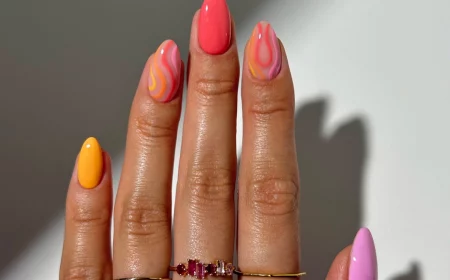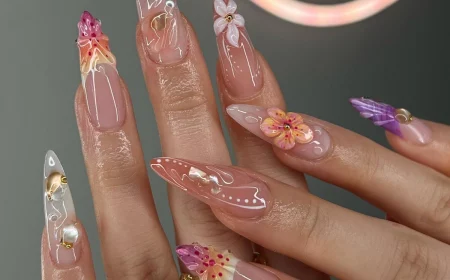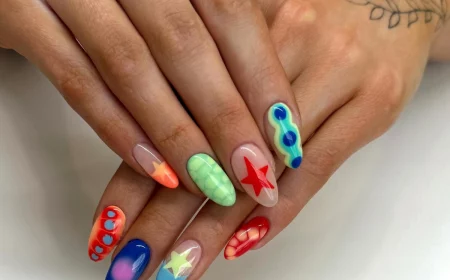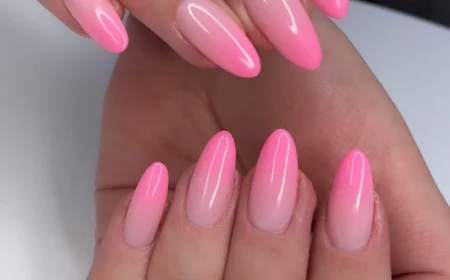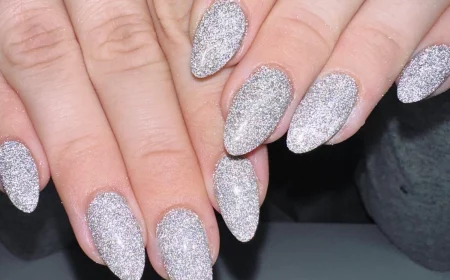The Real Deal on Pointy Nails: A Pro’s Guide to Cost, Care & Not Breaking Them
So, You’re Thinking About Pointy Nails…
I’ve been a nail tech for a long, long time—long enough to see nail trends cycle in and out more times than I can count. But the one style that never really fades? Pointy nails. Whether it’s a chic, graceful almond or a dramatic, razor-sharp stiletto, people are just drawn to that look. And I get it! But here’s the thing: clients come in with a photo, completely in love with the aesthetic, but they have no idea about the engineering that makes it all work.
In this article
- So, You’re Thinking About Pointy Nails…
- The Hidden Strength: Why Nail Structure is Everything
- The Big Two: Almond vs. Stiletto
- Choosing Your Fighter: Acrylic vs. Hard Gel
- How to Spot a Great Nail Tech (and Avoid a Bad One)
- The Real-World Investment: Cost and Time
- Living with Your New Claws: Essential Home Care
- A Word to the DIY Warriors
- Inspirational Gallery
A gorgeous, long-lasting pointy nail isn’t just about filing a tip. It’s about structure, balance, and knowing the material you’re working with, from natural nails to professional enhancements. My goal here is to pull back the curtain and share what I’ve learned from thousands of hours at the nail desk. We’re going to get into the nitty-gritty of what makes these shapes last, why one might be perfect for you and another a recipe for disaster, and what you should realistically expect in terms of cost and upkeep.
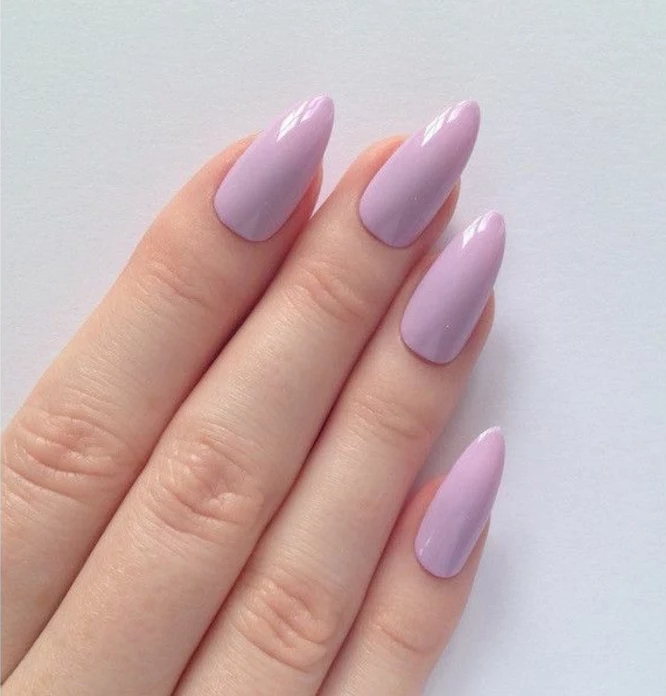
The Hidden Strength: Why Nail Structure is Everything
Before we even dream of shaping a nail, we have to respect the physics. A nail is essentially a thin sheet of keratin. By itself, it has a bit of flex but not a lot of strength. The real power of any nail—natural or enhanced—comes from its architecture. When we create these long, tapered shapes, we’re basically fighting gravity and leverage. A long, thin point puts a ton of pressure on one tiny area, daring it to snap.
The Apex: Your Nail’s Secret Weapon
The single most important part of a strong nail is the apex. This is the highest point of the nail’s curve, strategically placed over the stress area (that spot where your nail leaves your finger and takes the most abuse). A well-built apex acts like an arched bridge, distributing any force or pressure down into the strongest part of the nail bed.
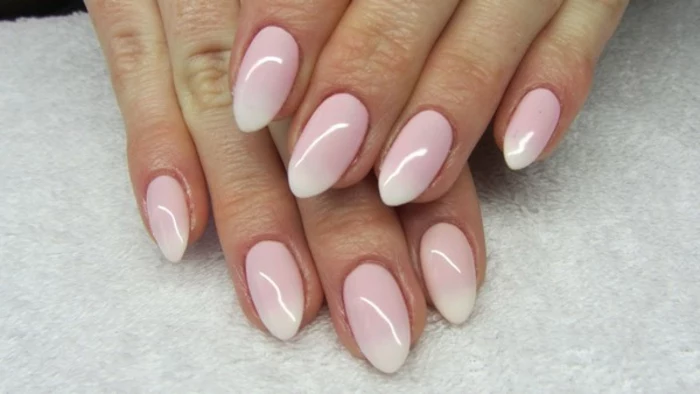
On a short, natural nail, you barely notice it. But on a long almond or stiletto, that apex is sculpted with absolute precision. If you look at a pro-level nail from the side, you’ll see a graceful curve that’s thickest over that stress point and tapers thinly toward the cuticle and the free edge. Without it, the nail is flat, weak, and doomed. Honestly, this is the #1 mistake I see in DIY nails—a flat layer of product that cracks within days.
The C-Curve: The Other Pillar of Power
Now, look at a nail tip head-on. See that curve from side to side? That’s the C-curve. A nice, deep C-curve adds a surprising amount of structural integrity. Think about it: a curved piece of paper is way harder to bend than a flat one, right? Same principle. When pros apply acrylic or gel, we often give the product a gentle pinch as it sets to enhance this curve, making the whole extension much more durable. It’s a small step that makes a world of difference.
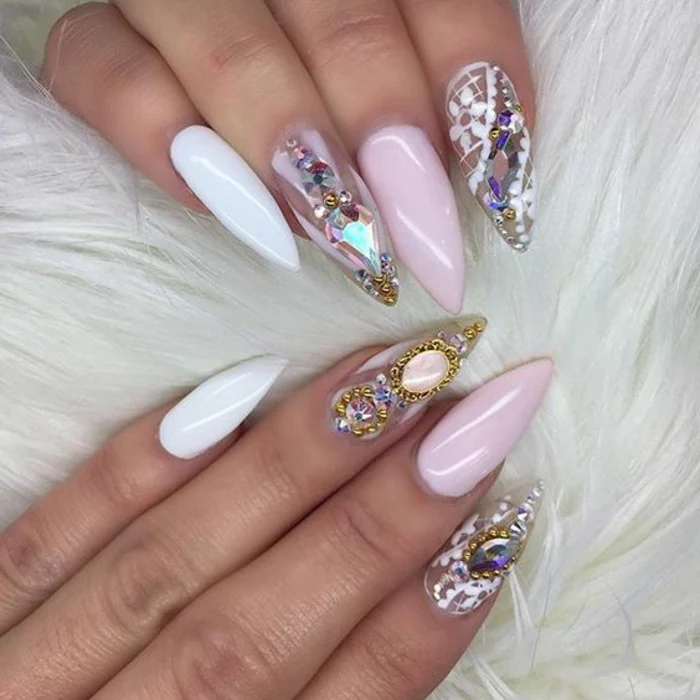
The Big Two: Almond vs. Stiletto
Clients often use these terms interchangeably, but trust me, they are worlds apart. The choice between them impacts everything: durability, your daily life, and how they’re even made.
The Almond Shape: Chic and Surprisingly Practical
An almond nail is pure elegance. The sides taper in, but they lead to a soft, rounded point, just like the nut. This shape is wildly popular because it makes fingers look long and slender without being too aggressive. The key is that the tip is blunted, not a sharp weapon.
Structurally, this makes the almond way stronger than a stiletto. That rounded tip is less likely to snag, and there’s no single, fragile point to absorb all the impact. This is a great choice for most people, and if your natural nails are strong, you can often achieve this shape without enhancements. For shaping, we use a fine 240-grit file, always filing in one direction to prevent fraying, and then soften the tip into that classic curve.
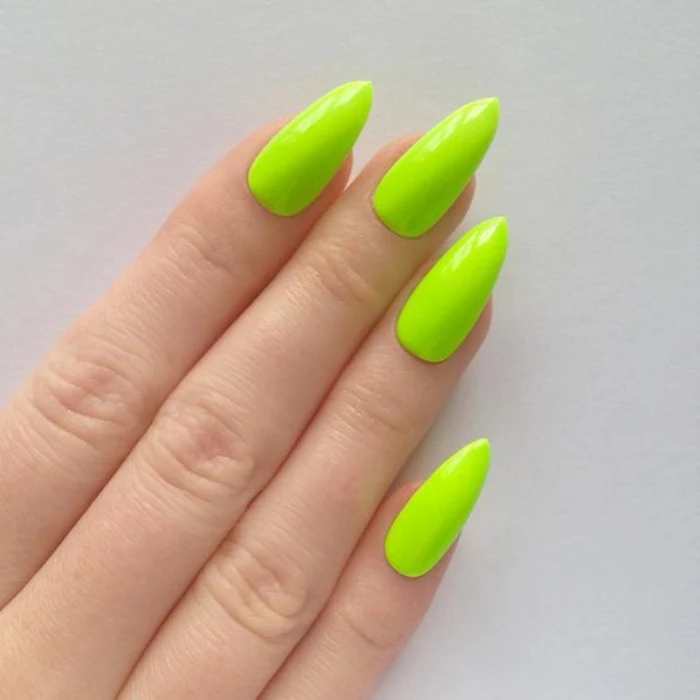
The Stiletto Shape: All Drama, High Maintenance
And then there’s the stiletto. This shape is a statement. It’s all about straight, unforgiving sidewalls that meet at an incredibly sharp, needle-like point. It’s a look, for sure, but it’s also the most fragile nail shape that exists. That tiny point catches on everything—sweaters, hair, you name it—and it’s the weak link that will break under pressure.
Because of this, a true stiletto on natural nails is a bad idea. They just don’t have the inherent strength. A lasting stiletto needs to be built with a professional product like acrylic or hard gel. This allows a technician to create the perfect apex and C-curve needed to support the length. It’s a game of millimeters; if the point is even slightly off-center, the whole structure is compromised.
Choosing Your Fighter: Acrylic vs. Hard Gel
When you get enhancements, you’ll likely be offered acrylic or hard gel. They can both produce beautiful results, but they have different pros and cons.

- Acrylic: The Workhorse. For those extreme stiletto lengths, acrylic is often the go-to. Its biggest pro is its unmatched strength and rigidity. It’s tough as… well, nails. The main con? The smell. The liquid monomer has a very distinct, chemical odor that can be intense for some people.
- Hard Gel: The Sleek Contender. Hard gel is a fantastic alternative, especially if you prefer a lighter-feeling nail or are sensitive to smells. Its biggest pro is that it’s odorless and has a bit more flexibility, which can sometimes prevent a shatter. The con? That same flexibility means it might not be the best choice for super long, dagger-like stilettos that need maximum rigidity.
A good tech can advise you on which is better for the shape and length you desire.
How to Spot a Great Nail Tech (and Avoid a Bad One)
Okay, so you’re sold on the look. But how do you find someone who can actually pull it off safely and beautifully? This is crucial.

Green Flags (Signs you’re in good hands):
- They start with a consultation. They ask about your job, hobbies, and lifestyle to make sure the nails you want will actually work for you. They’ll be honest if your dream nails are impractical.
- The station is spotless. Look for clean surfaces and disinfected tools. They should open a new, sterilized pouch of metal tools (like pushers and nippers) for you. Files and buffers should be new for each client.
- They are gentle. Prep should never, ever be painful. Aggressive filing or drilling on your natural nail is a major red flag.
- They are upfront about cost and time. They’ll tell you what to expect before they start.
Red Flags (Turn around and walk out):
- Pain. If anything hurts, speak up. If they dismiss your concerns, leave.
- A dirty station or shared tools. Non-negotiable. This is how infections spread.
- Overly thick or lumpy nails. Well-done enhancements have a sleek, natural-looking curve, not a big, thick blob of product sitting on top.
- They rush the prep. This is the most important step for longevity and safety.

The Real-World Investment: Cost and Time
Let’s talk numbers, because this is a big part of the commitment. A beautiful set of sculpted pointy nails is an investment.
For a high-quality full set of sculpted acrylic or gel stilettos from a skilled tech, you can expect to pay anywhere from $85 to $200+, depending on your location, the tech’s experience, and any art you add. And plan for it to take a while—a proper set can take 2 to 3 hours.
Maintenance is just as important. You’ll need a fill (or “rebalance”) every 2 to 3 weeks to move the apex back and maintain the structure as your nails grow. A fill will typically cost between $60 and $100+ and take about 90 minutes. Skipping fills is asking for a painful break, plain and simple.
Living with Your New Claws: Essential Home Care
Once you leave the salon, the partnership begins. How you treat your nails determines how long they’ll last.
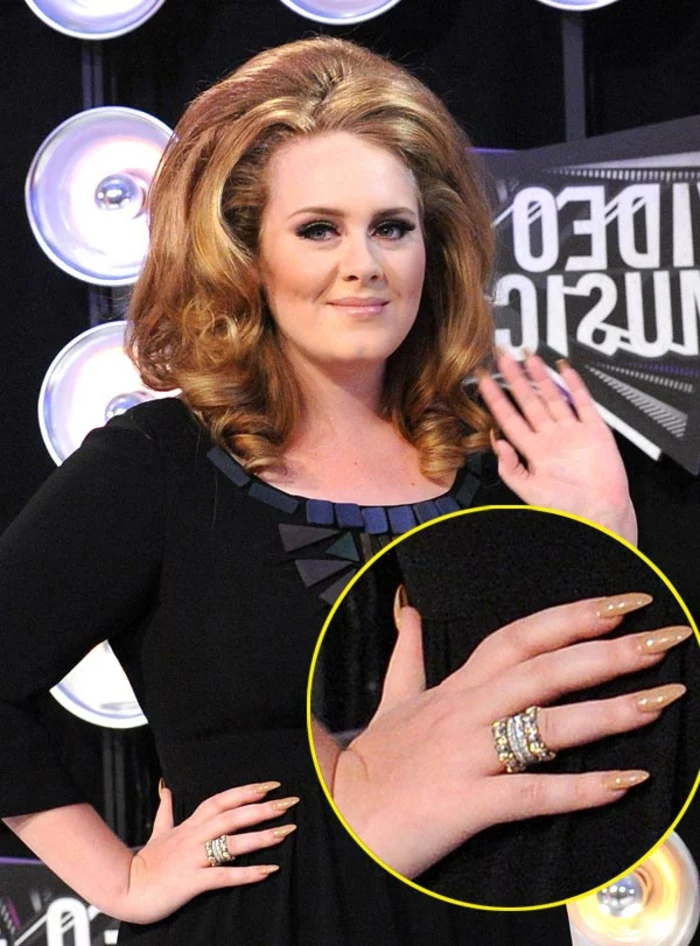
Treat Them Like Jewels, Not Tools
This is the golden rule. But what does it mean in practice? It means you have to re-learn a few things. You can no longer use your nail tips to open soda cans, scrape off labels, or button tight jeans. Use the pads of your fingers for typing and pressing buttons. Be mindful when running your hands through your hair or reaching into a purse. It’s an adjustment, for sure!
First Aid for a Bad Break
It happens. If you get a nasty break that’s low on the nail and painful, please, do not rip it off! You’ll take layers of your natural nail with it. Instead, gently clean the area with soap and water, cover it with a bandage if needed, and call your tech for a repair appointment. Trying to glue it or fix it yourself can often trap bacteria or cause more damage.

Your New Best Friend: Cuticle Oil
Quick win: If you have nail enhancements, go find your cuticle oil and apply it right now. Don’t have any? Get some. A bottle of CND SolarOil or even plain jojoba oil will run you $10-$15 and is the best thing you can do for your nails at home. Apply it once a day to keep your cuticles and the surrounding skin hydrated. This also helps keep the enhancement product just a tiny bit more flexible, making it less prone to getting brittle and snapping.
A Word to the DIY Warriors
I totally get the appeal of doing your own nails. But I have to give a word of caution. Professional products like acrylics and hard gels are potent chemicals. The biggest risk at home is developing a permanent contact allergy. If uncured product repeatedly touches your skin, your body can build up a severe, irreversible allergic reaction. It’s a serious health risk that can prevent you from ever wearing enhancements again.
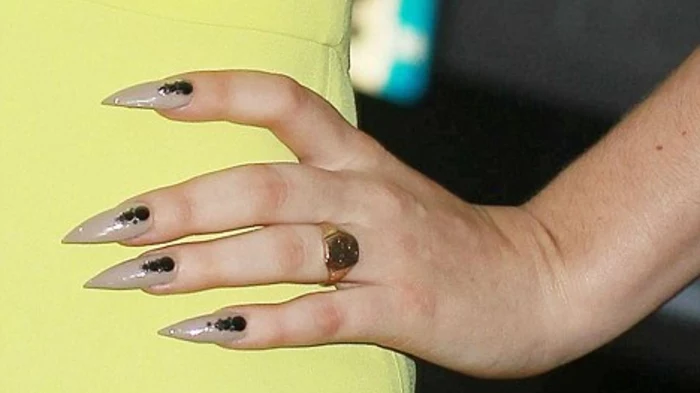
If you really want to try out pointy shapes at home, I strongly suggest starting with high-quality press-on nails. They’ve gotten so good! Brands like Glamnetic or Kiss offer amazing shapes and let you test-drive the length and look with zero commitment or chemical risk. If you’re dead-set on learning enhancements, please, please find a proper training course from a licensed pro to learn about safety and chemistry first.
Inspirational Gallery

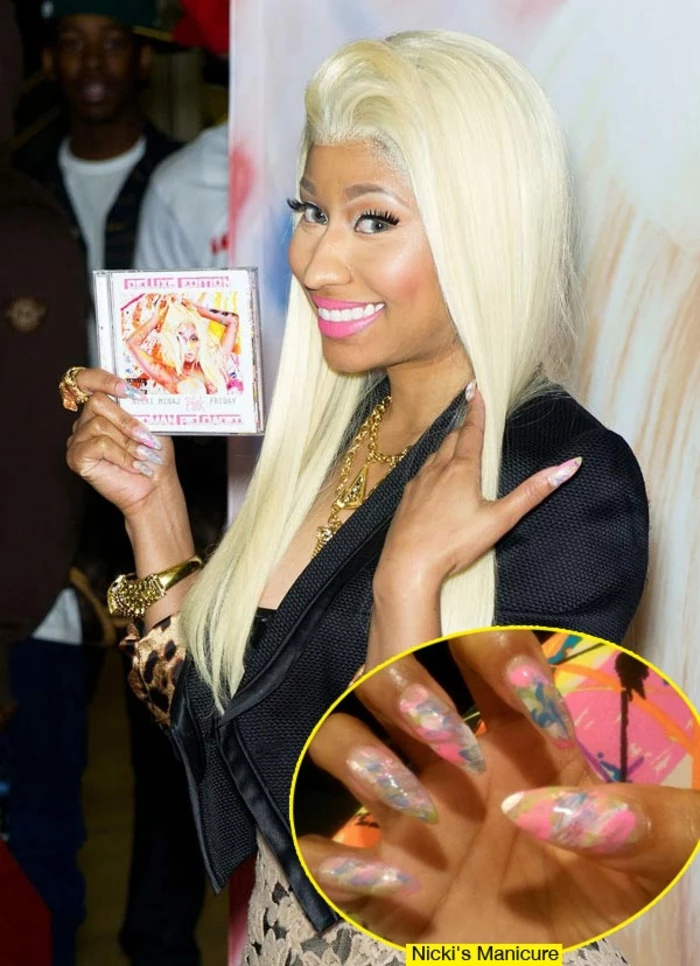


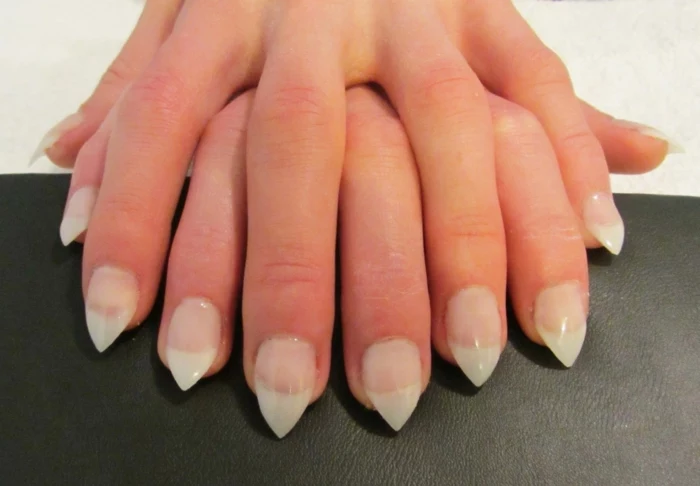
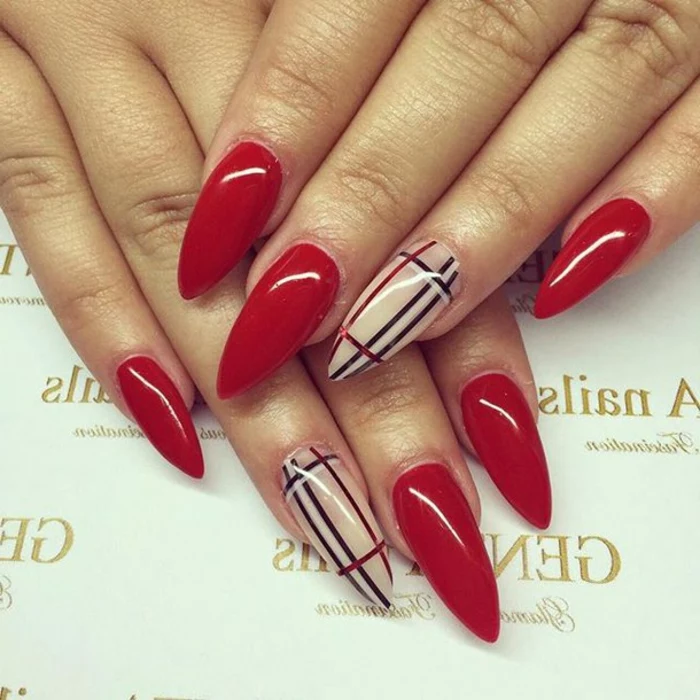
Hard Gel vs. Acrylic: Acrylic is known for its rigidity and strength, making it a classic choice for dramatic stiletto nails. It’s tough as, well, nails. Hard Gel: Offers a bit more flexibility and a high-gloss finish that’s less prone to yellowing. It can feel lighter on the nail. For extreme lengths, many techs trust acrylic, but for a durable and slightly more natural-feeling almond, hard gel is a fantastic competitor.
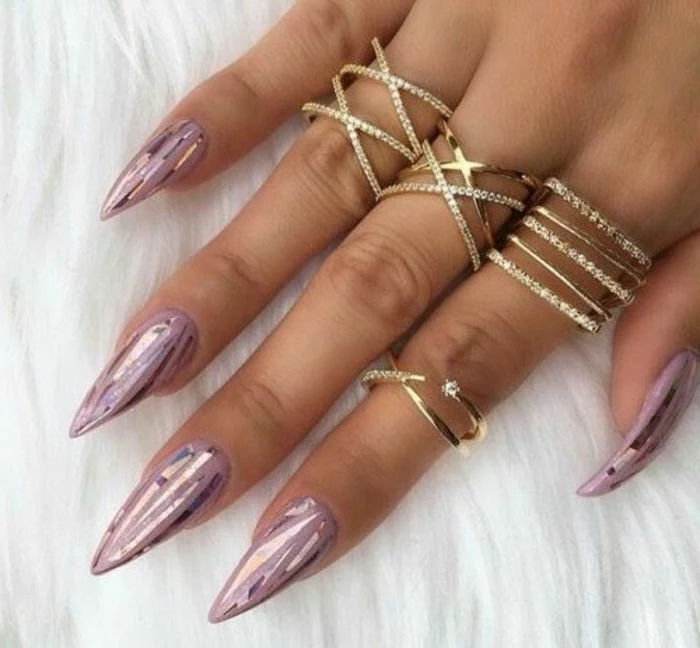

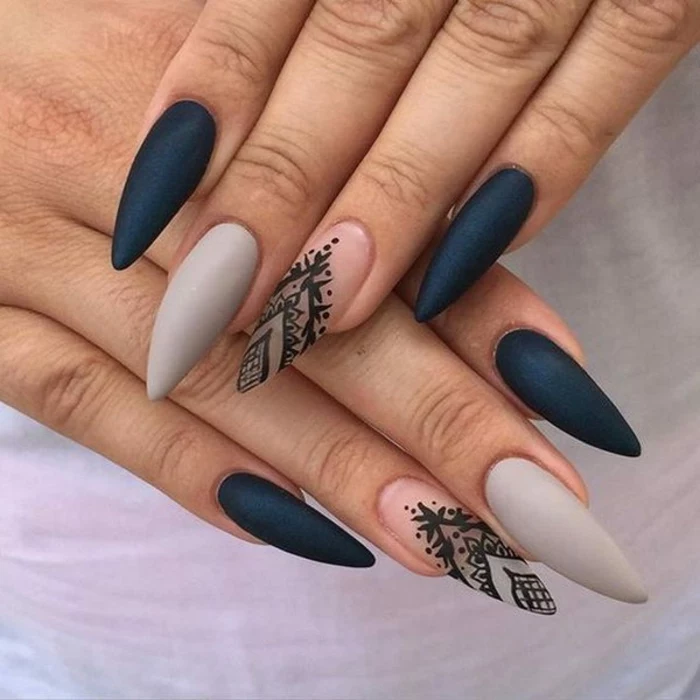
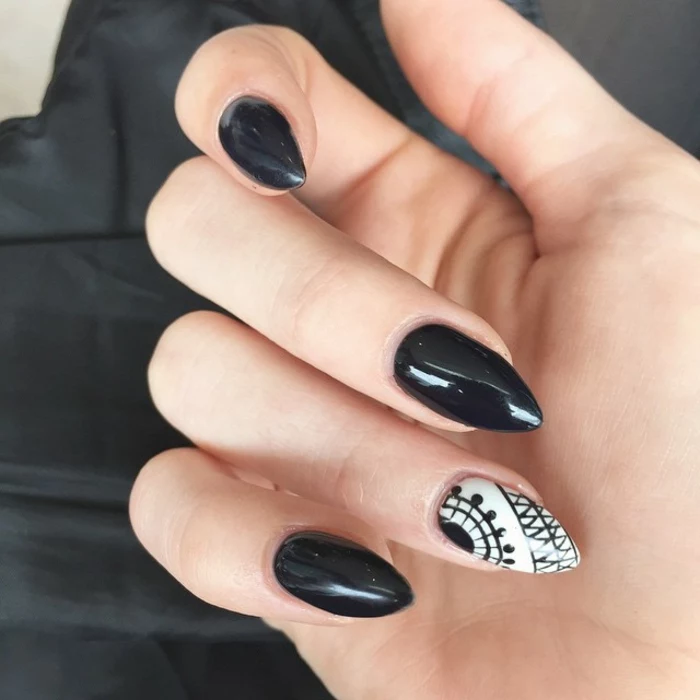
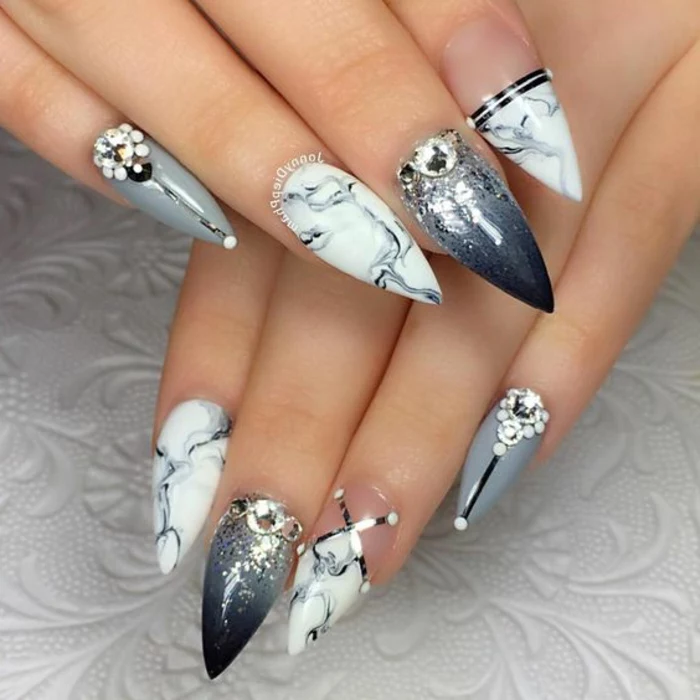
The global nail care market is projected to reach $11.6 billion by 2027.
That staggering number isn’t just about polish. It reflects the growing demand for professional services and enhancements like the complex structures required for long-lasting pointy nails. This investment shows that nail art is seen less as simple grooming and more as a key form of self-expression and fashion.
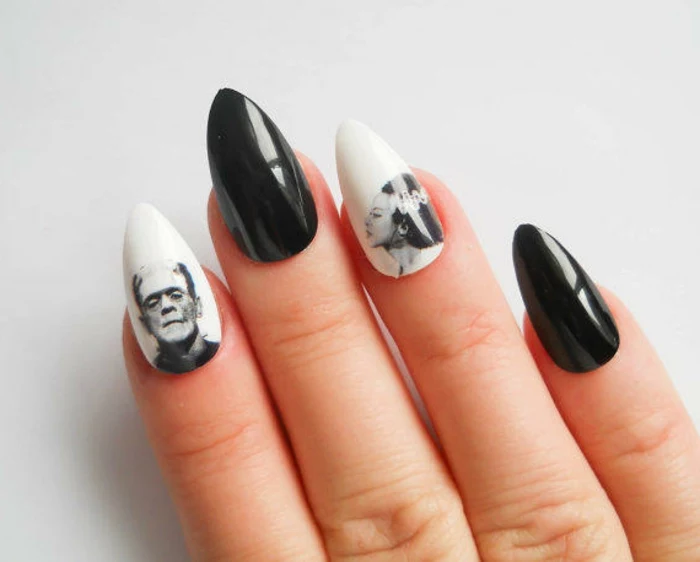
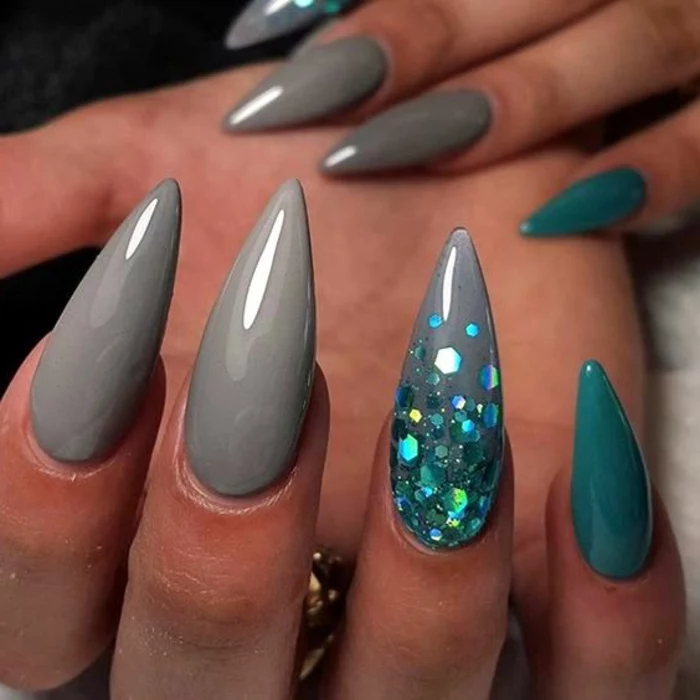
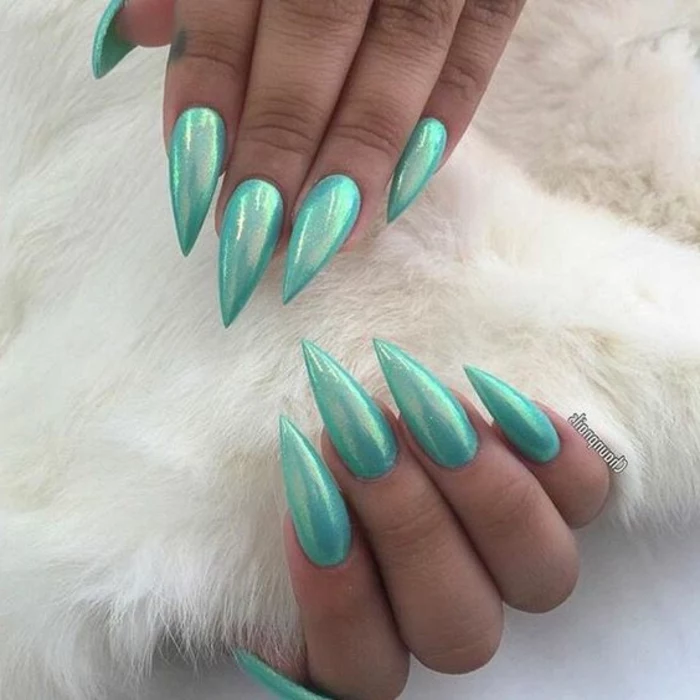
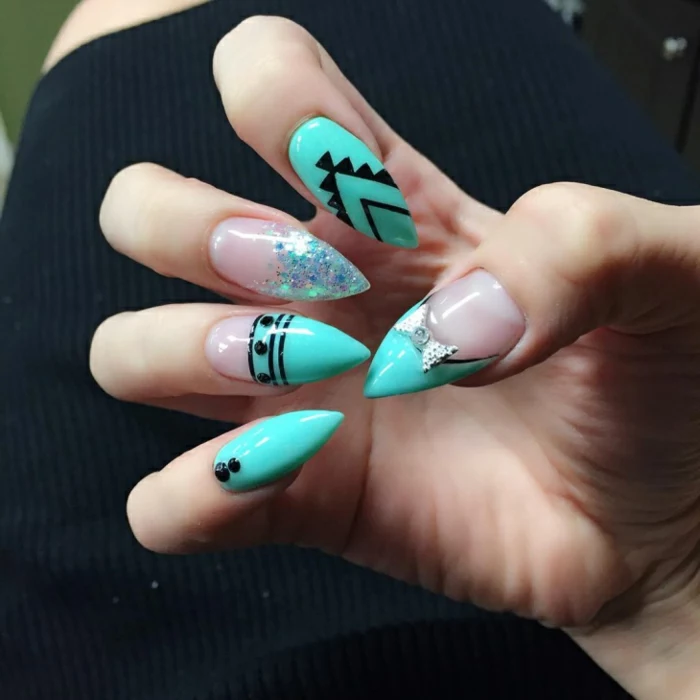
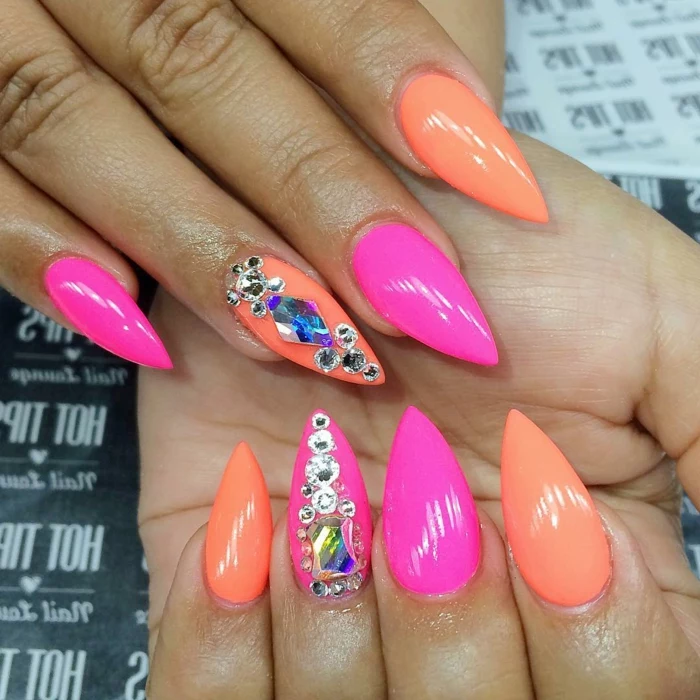
Can I get those razor-sharp nails with just a gel polish manicure?
In short, probably not. Gel polish is a soft coating that adds color and a bit of strength to your natural nail, but it doesn’t provide the architectural support (like an apex) needed for a long, tapered shape. To achieve a true stiletto or long almond, you need a structural product like acrylic, hard gel, or a full-coverage system like Apres Gel-X to build out the length and shape safely.
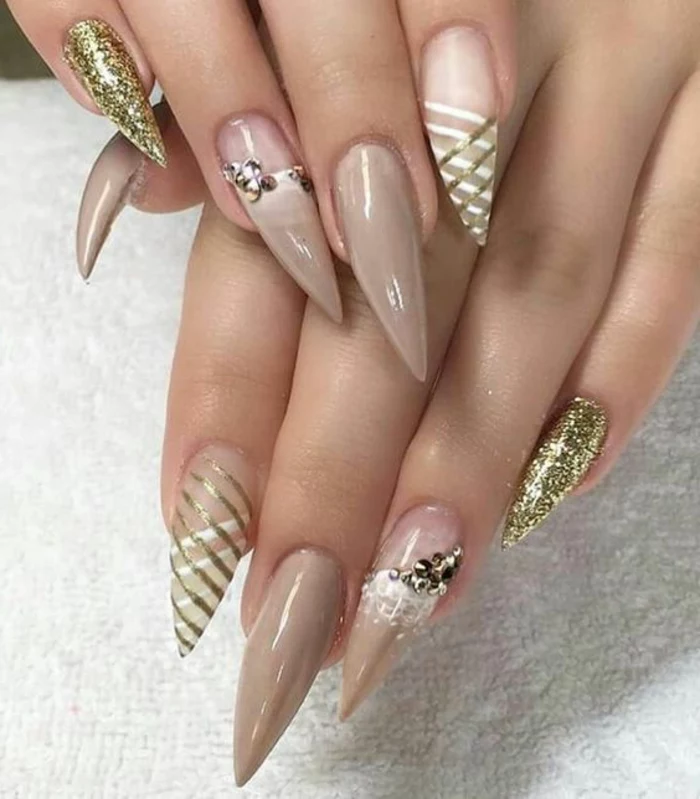
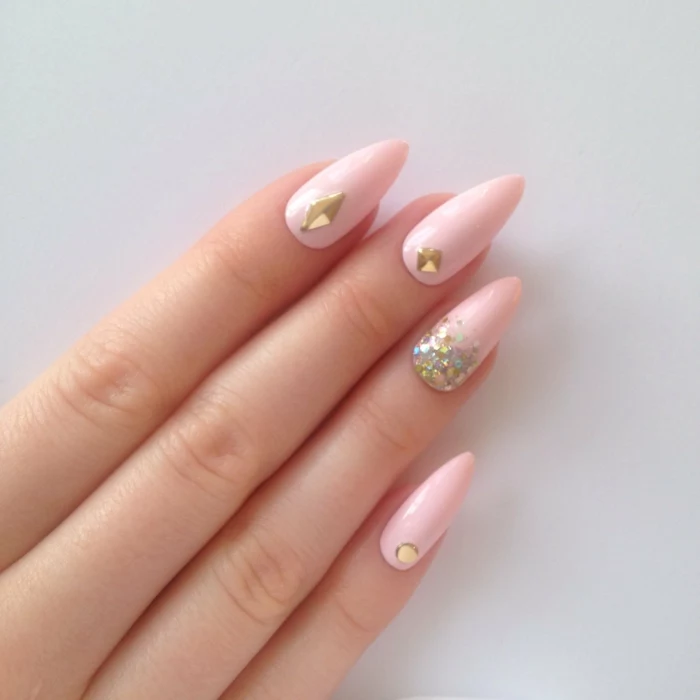
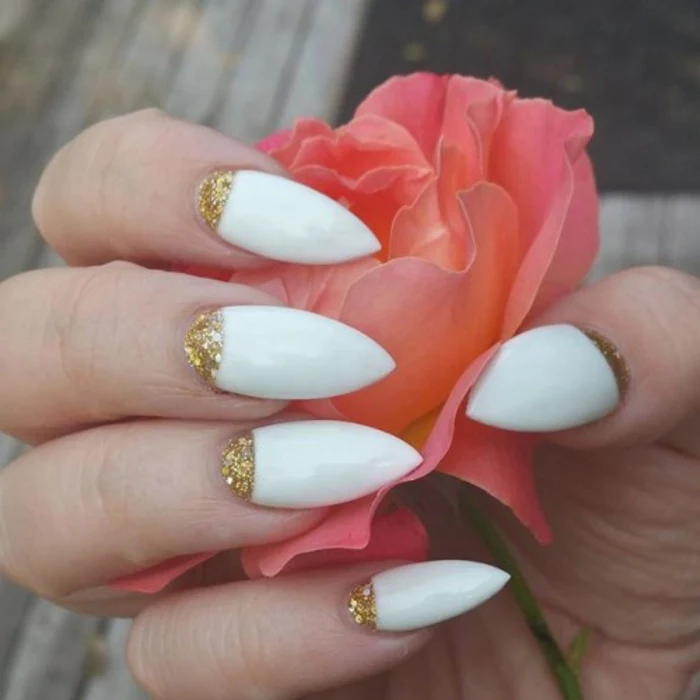
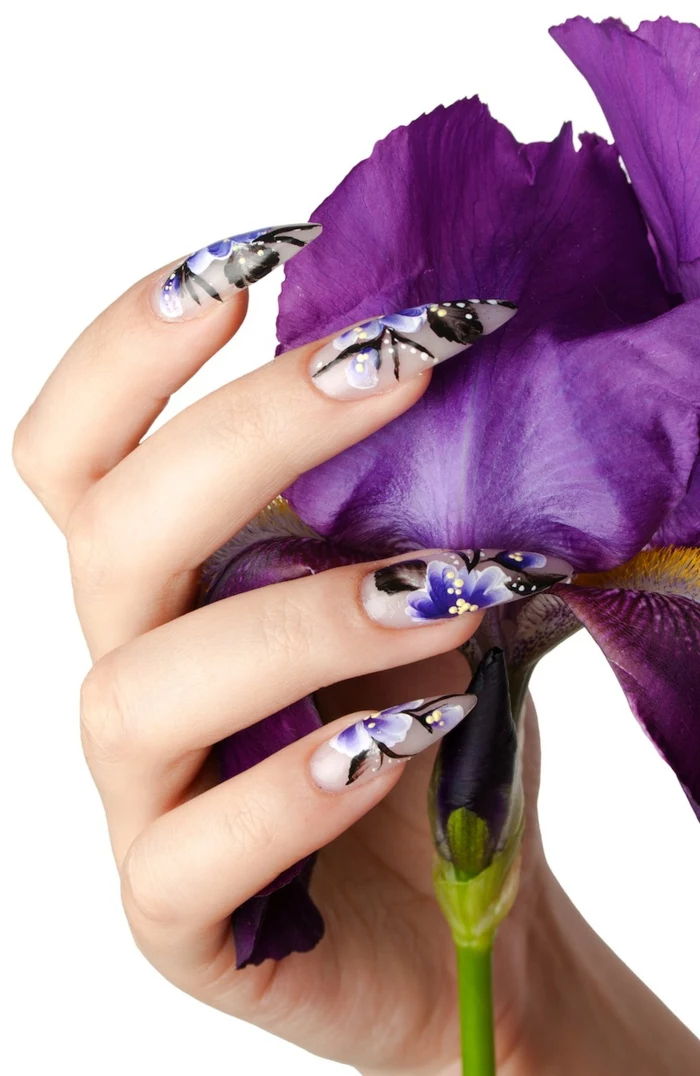
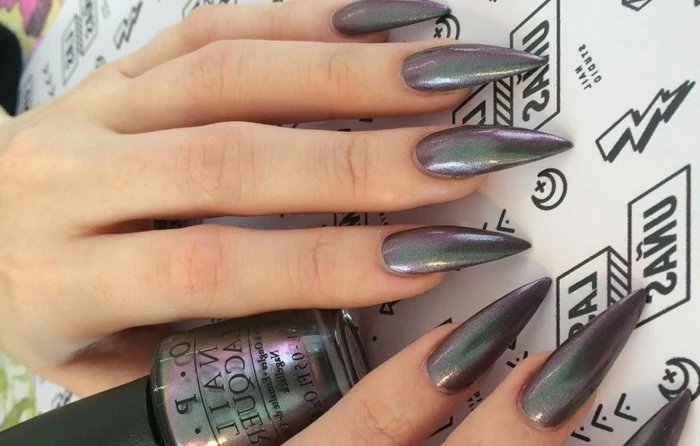
Adapting to daily life with new claws is an art form. Start by using the pads of your fingers, not the tips, to type and text. For tricky tasks like picking up a credit card from a flat surface, use another card to slide under it or press down on one end to lift the other. You’ll be a pro in no time.
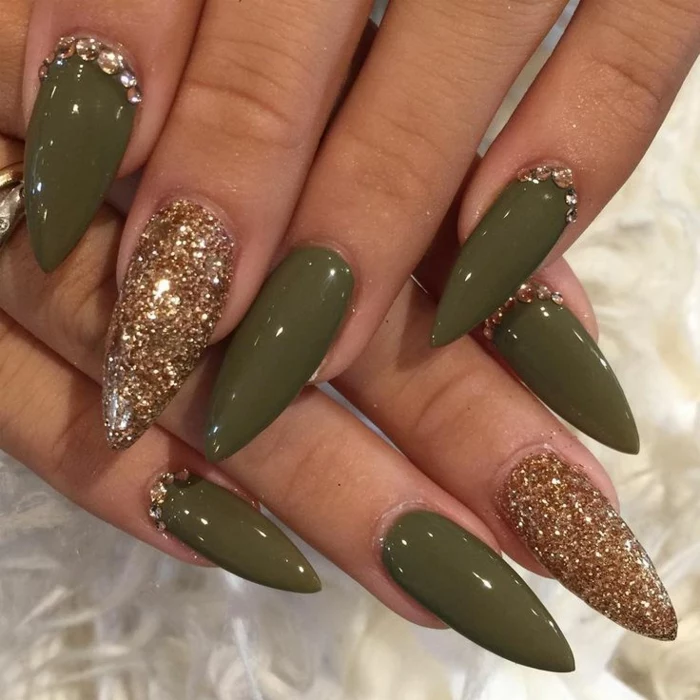
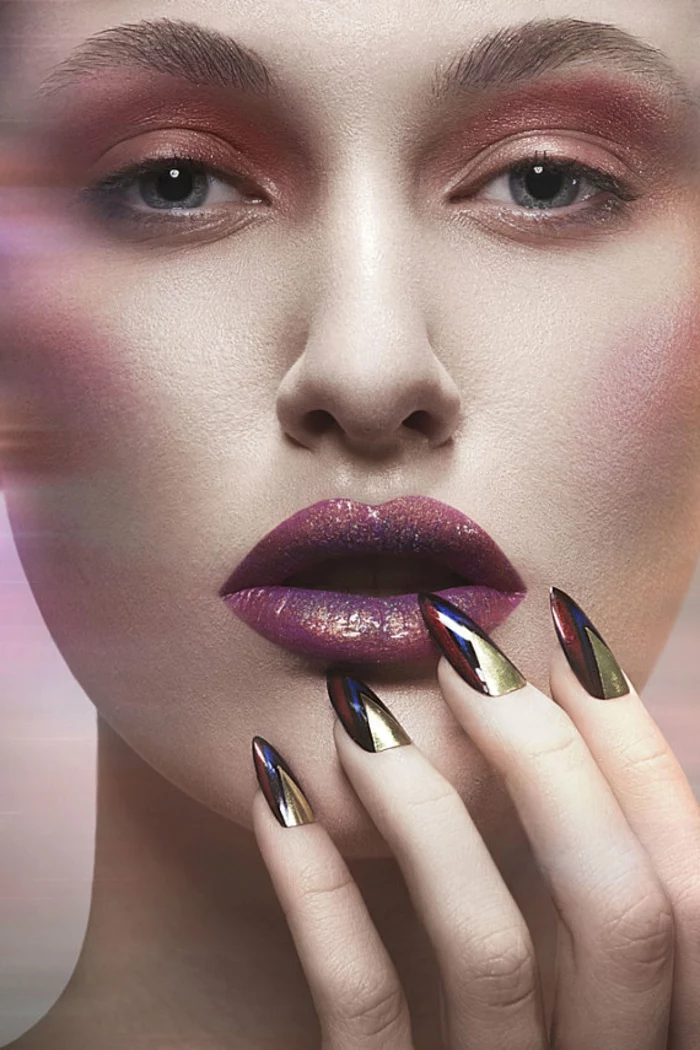

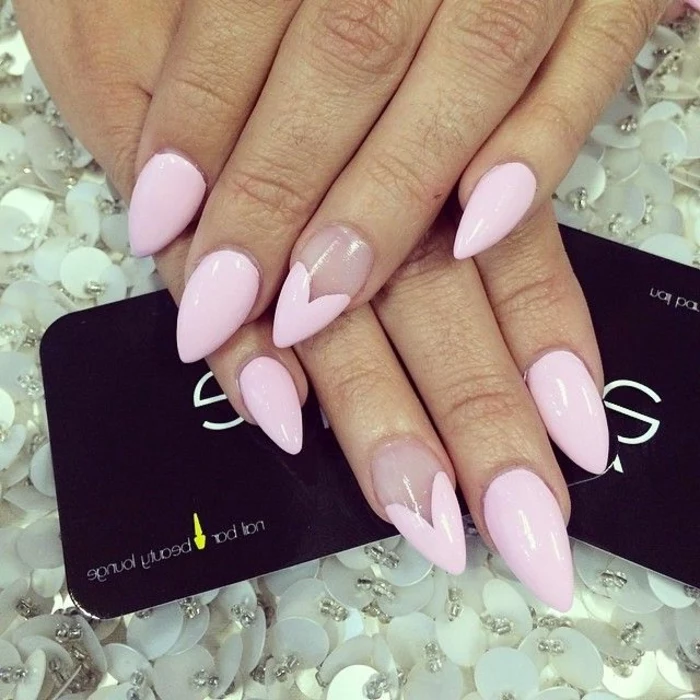
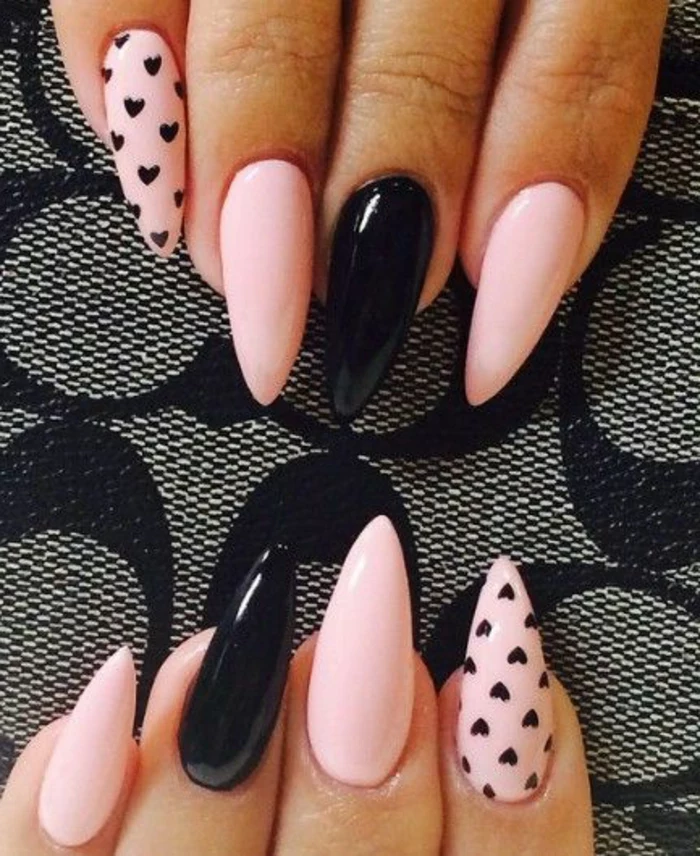
- Protects nail art from chipping.
- Hides imperfections and minor scratches.
- Provides a chic, velvety, modern finish.
The secret? A quality matte top coat. Ask your technician for a brand like OPI or CND for a finish that resists stains and stays truly matte between appointments.
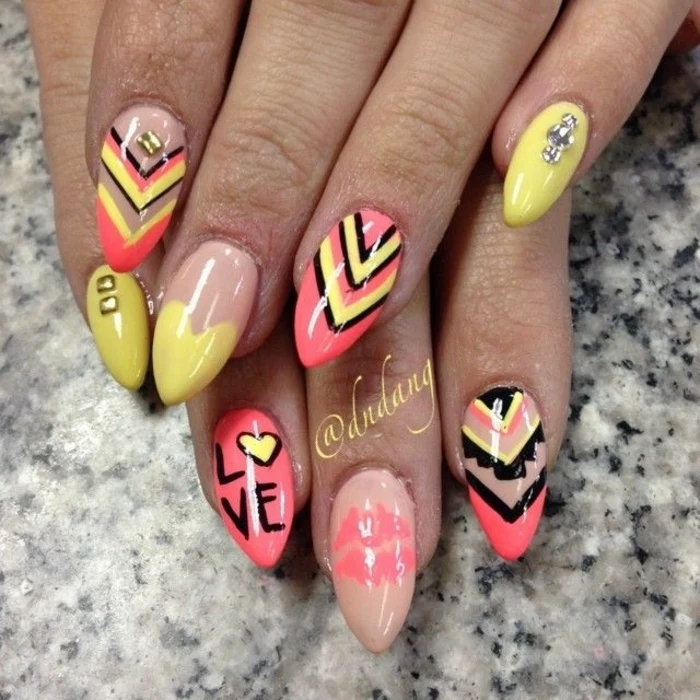
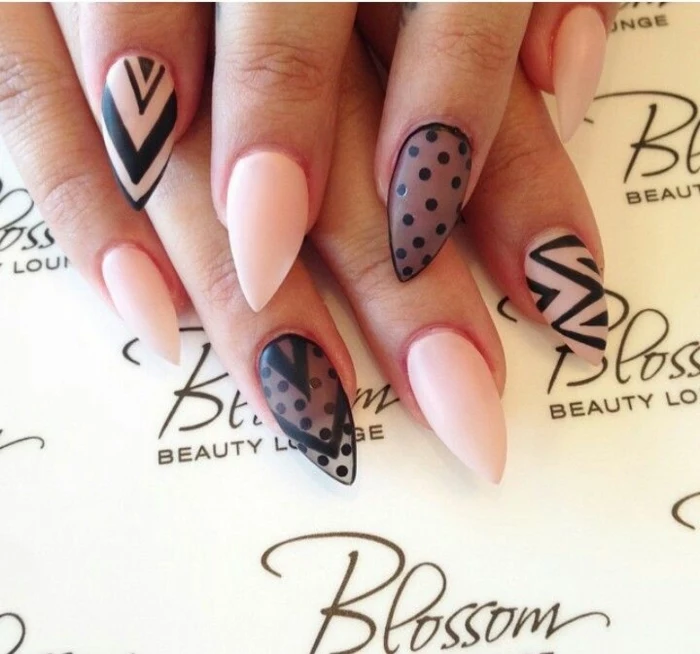
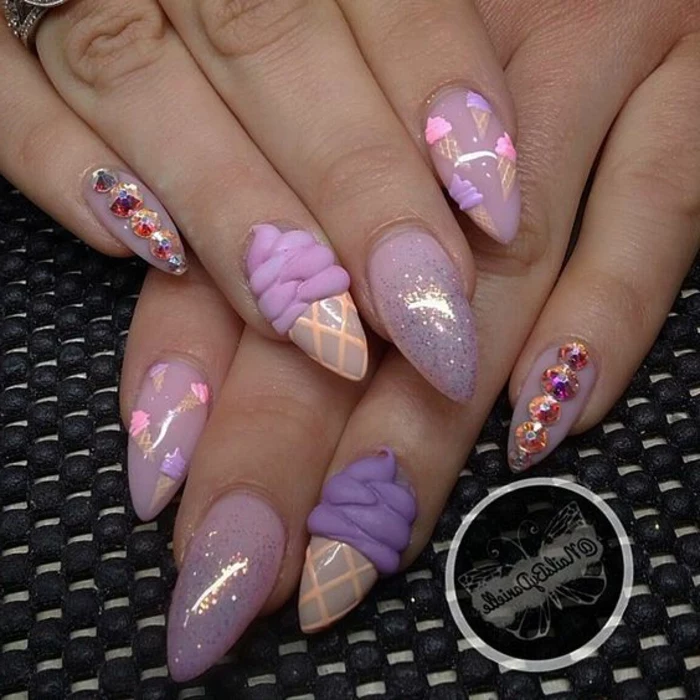
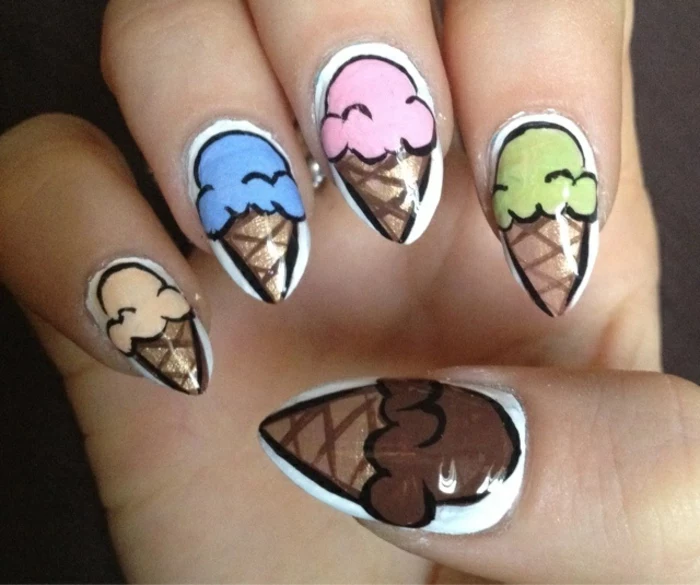
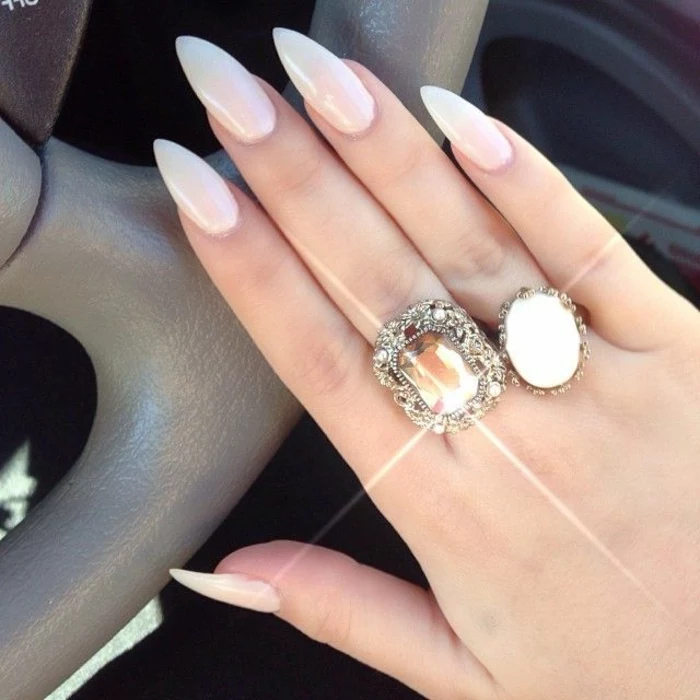
The Golden Rule: Your nails are jewels, not tools. This is the most crucial piece of advice for preserving your pointy manicure. Don’t use them to open soda cans, scrape off labels, or pry things open. Making this simple mindset shift is the number one thing you can do to prevent breaks and chips.

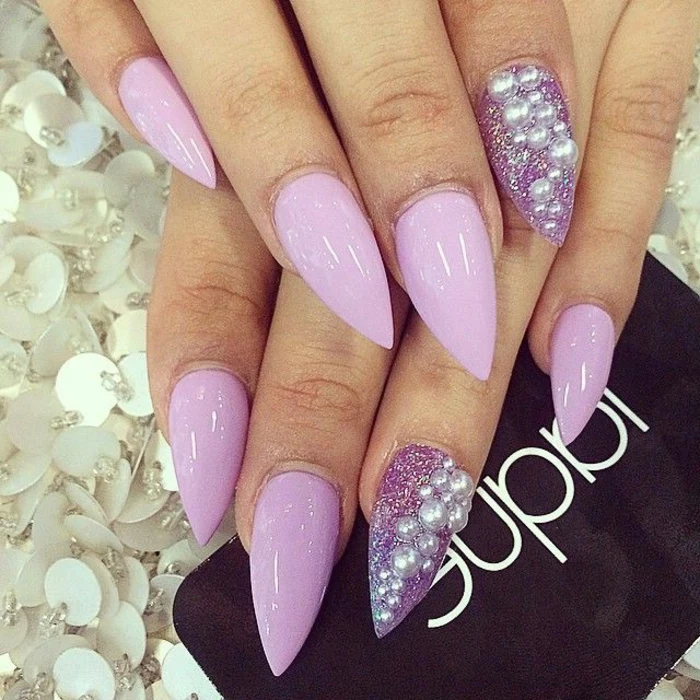

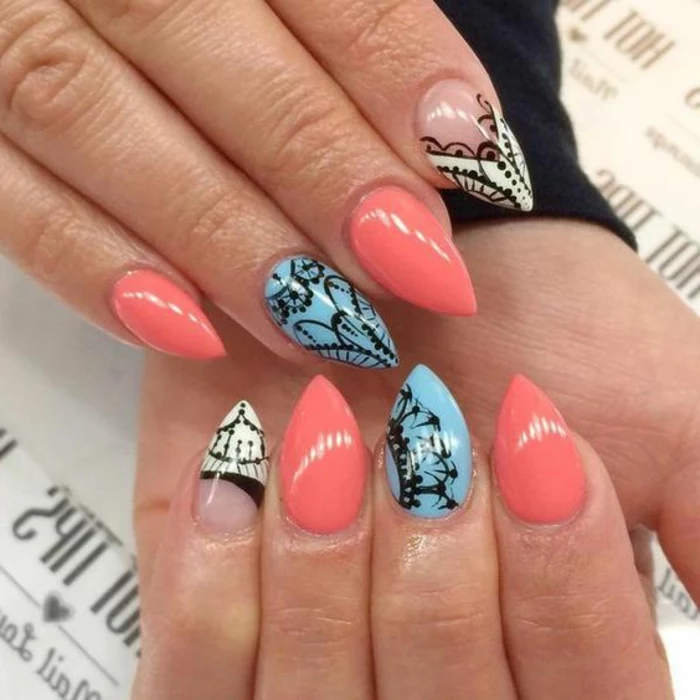
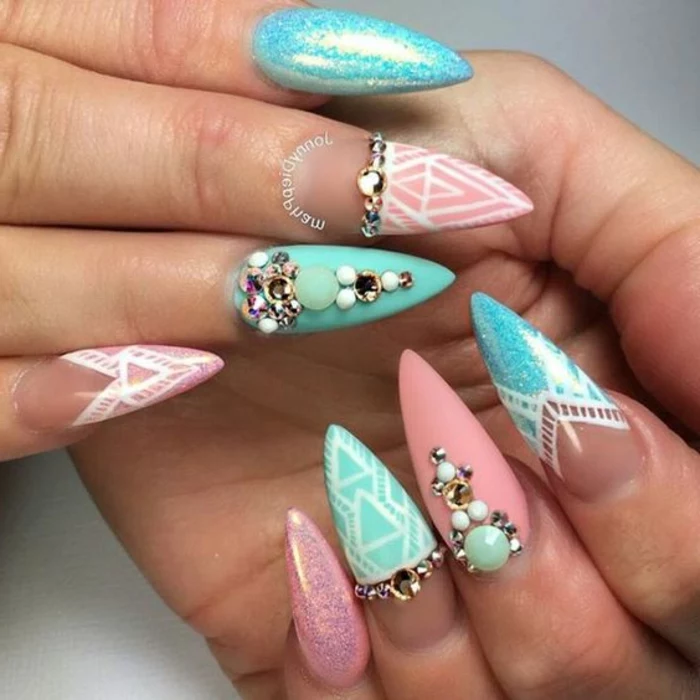
Pointy nails aren’t a new invention. While they feel very modern, tapered nail shapes have roots in various historical periods, including Ming Dynasty China where nobles grew extremely long nails to signify they didn’t do manual labor. The modern stiletto look we know and love gained major popularity in the 1950s and 60s, a true testament to its timeless glamour.
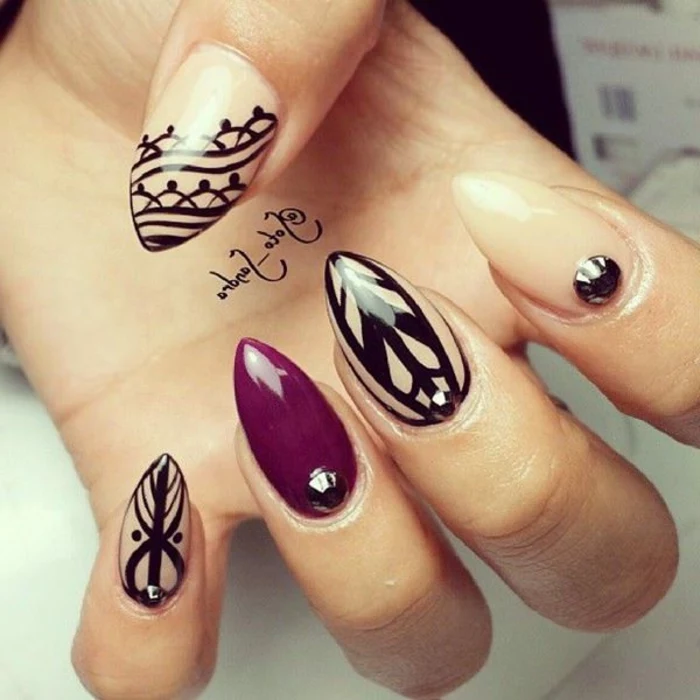
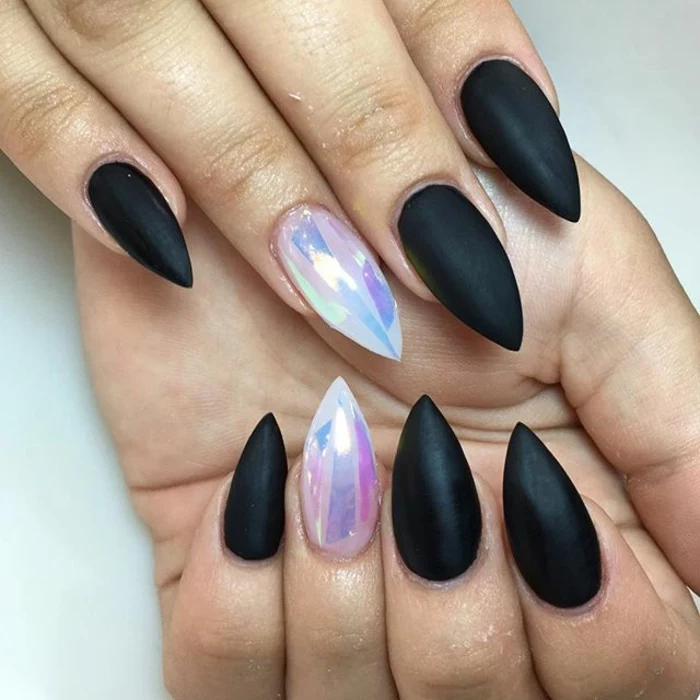
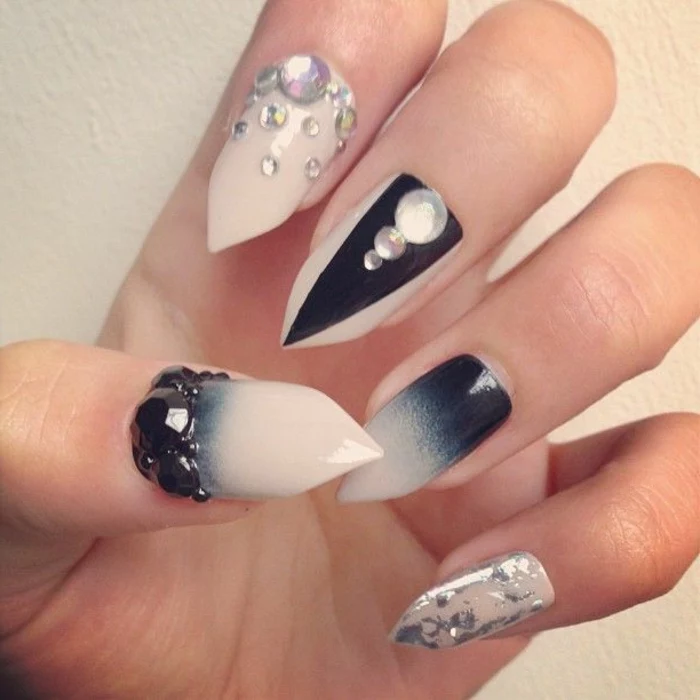
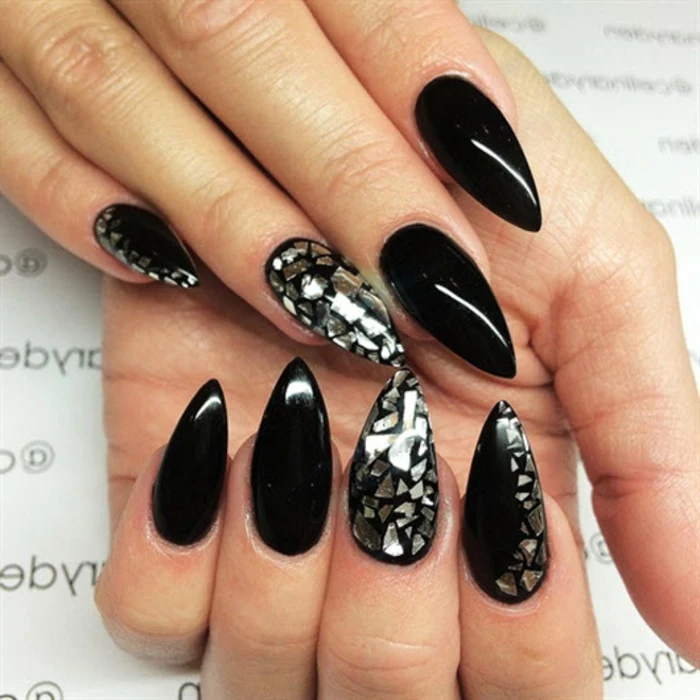
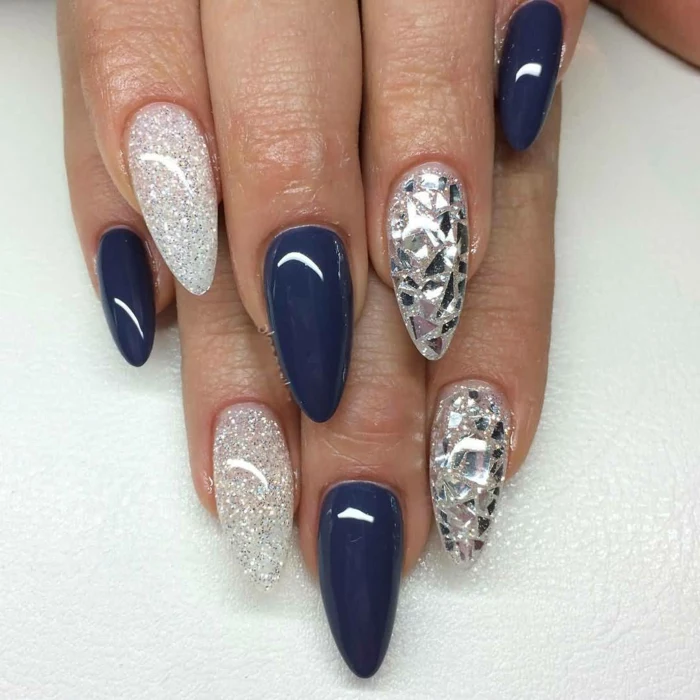
Think beyond a single color. The long canvas of a stiletto or almond nail is perfect for advanced art.
- Negative Space: Leaving parts of the nail bare creates an effortlessly cool, artistic look that plays with the nail’s shape.
- Micro-French: A super-thin colored line at the very tip of a pointy nail is a modern, subtle take on the classic.
- Aura Art: A soft, airbrushed-style circle of color in the center of the nail gives a mystical, trendy vibe.
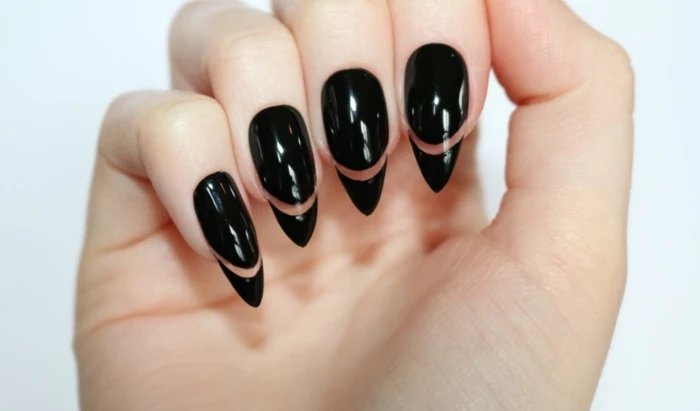
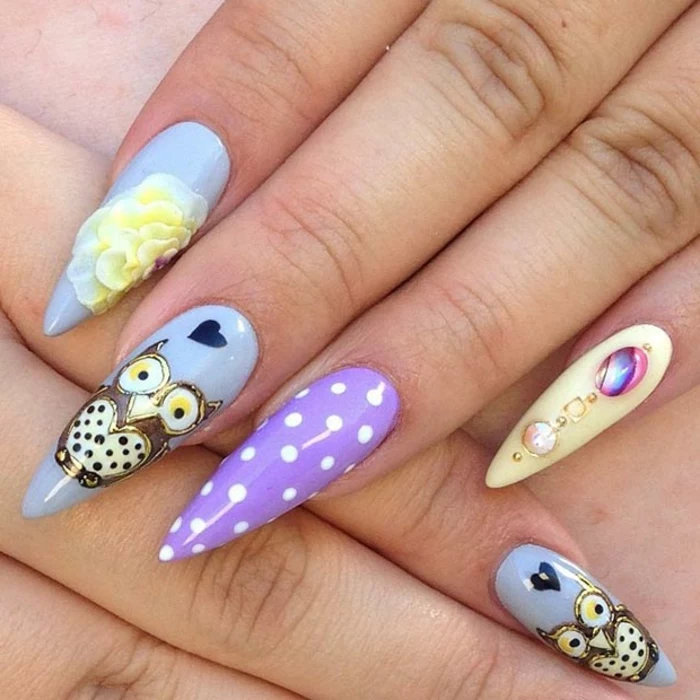
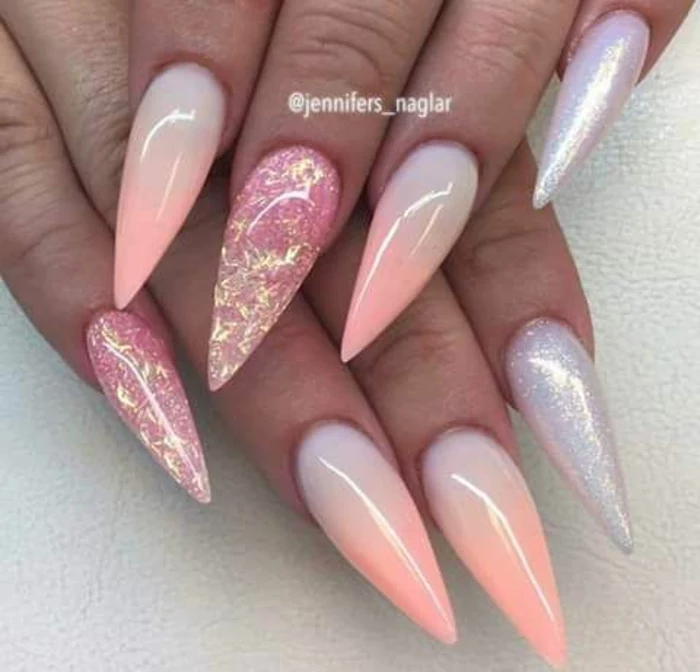
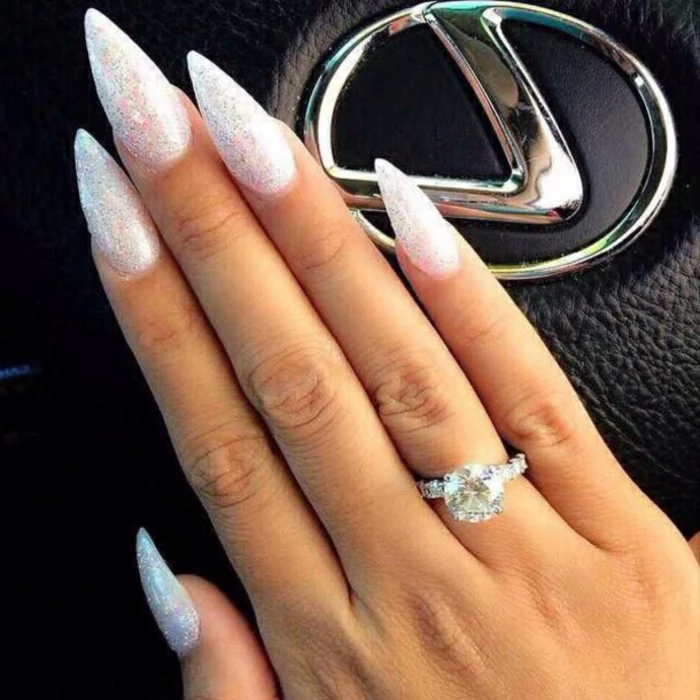
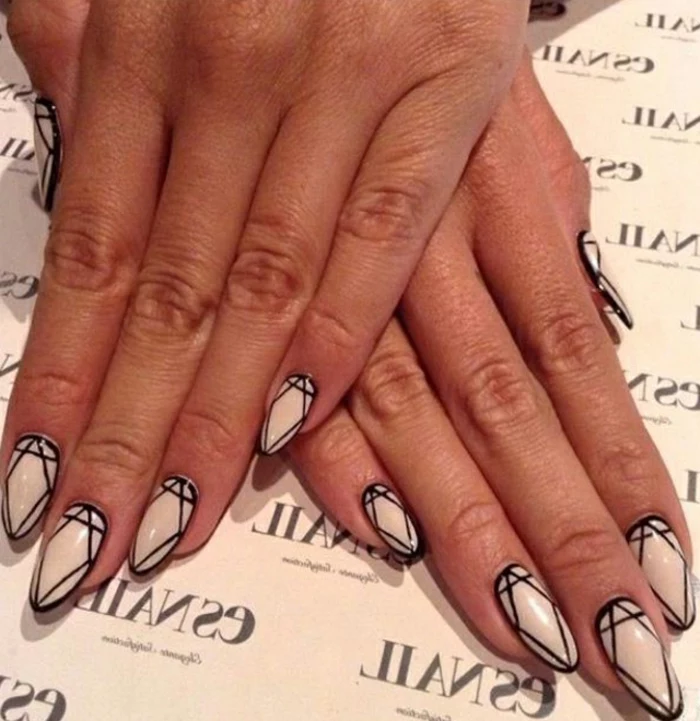
Are pointy nails considered ‘unprofessional’?
This is an outdated myth! In today’s world, especially in creative and corporate fields, self-expression is more accepted than ever. A well-maintained, clean manicure—regardless of shape—reads as polished and put-together. A nude almond nail can look incredibly chic and sophisticated in any boardroom.

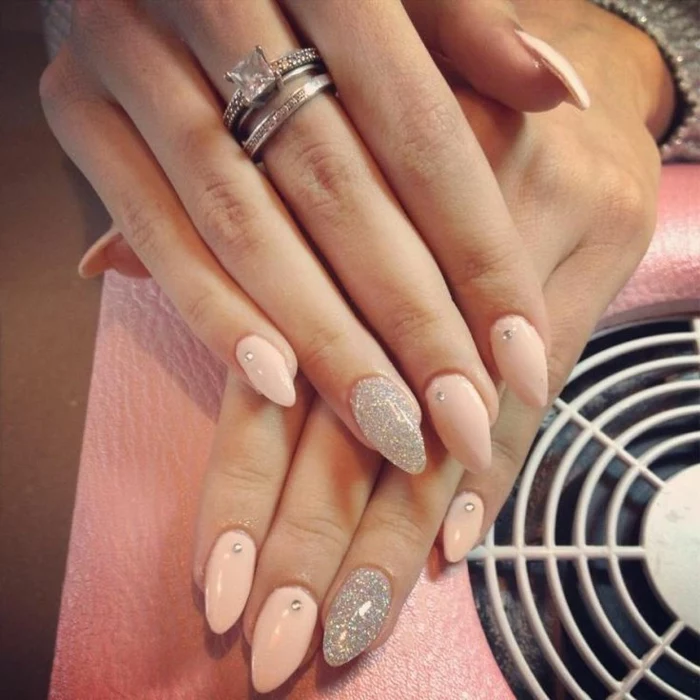
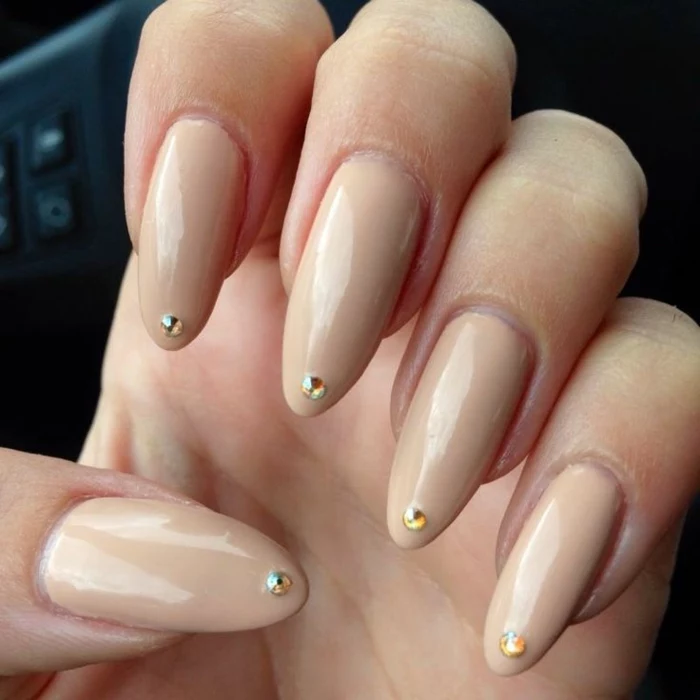
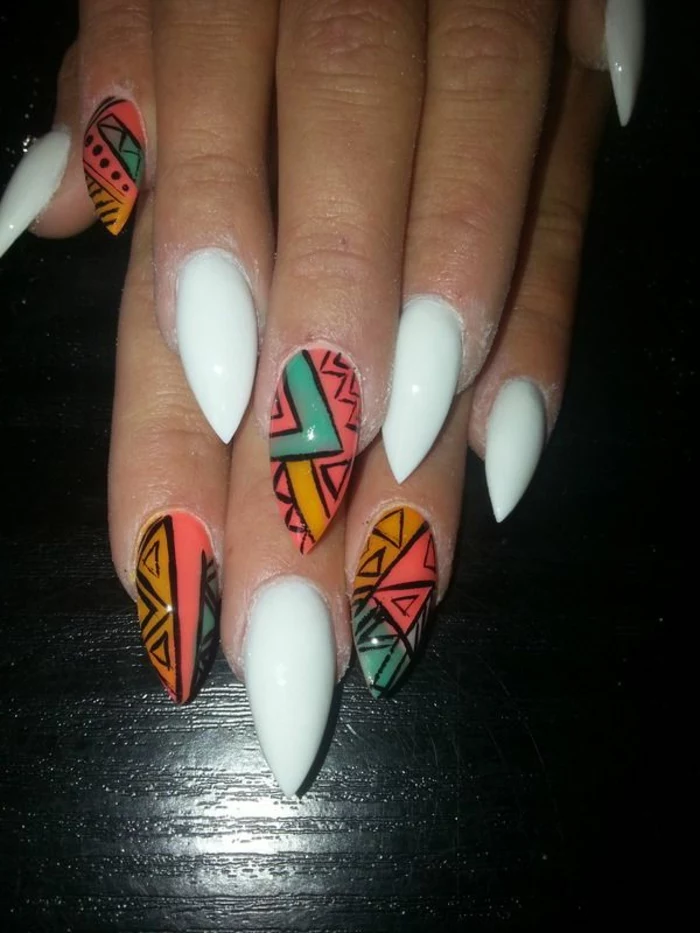
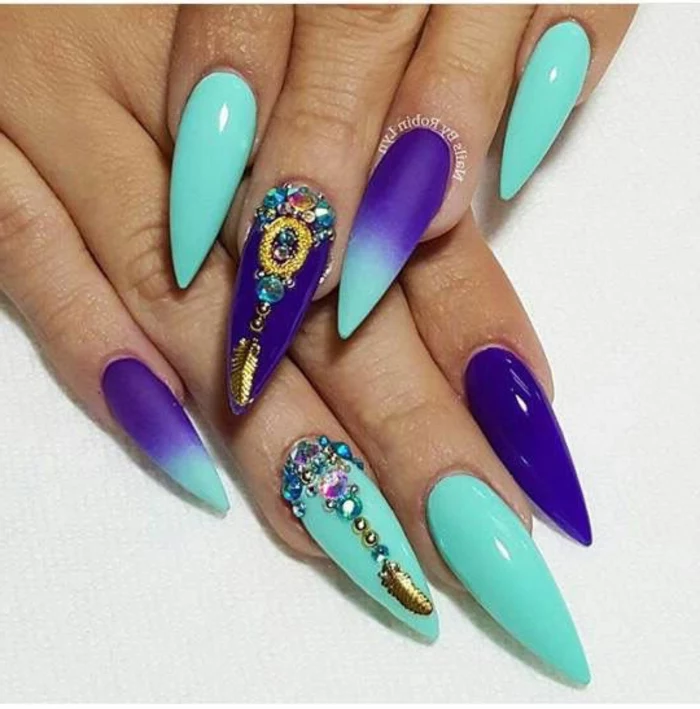
- They become your new primary tool for scratching an itch.
- They make a satisfying ‘click-clack’ sound on keyboards and phone screens.
- They can instantly make your fingers appear longer and more slender.
These are the little sensory experiences that get people hooked on the pointy nail lifestyle. It’s more than just a look; it’s a feeling.
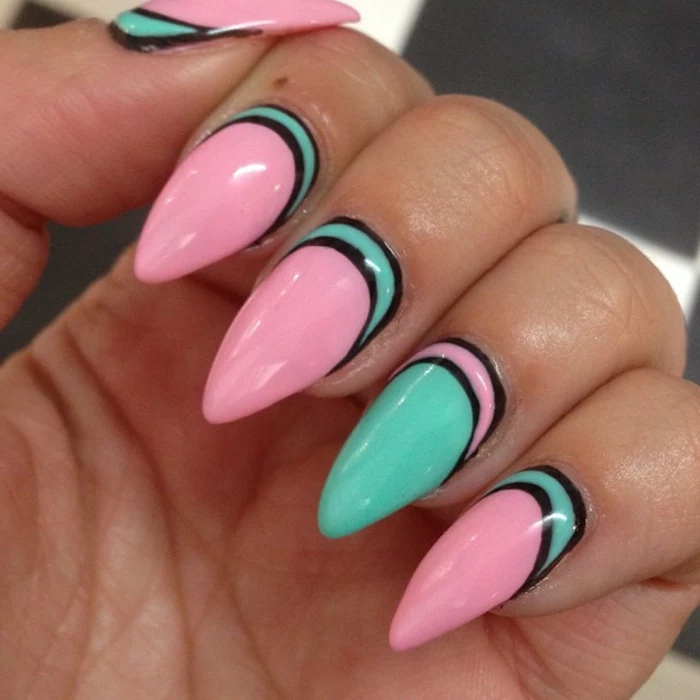
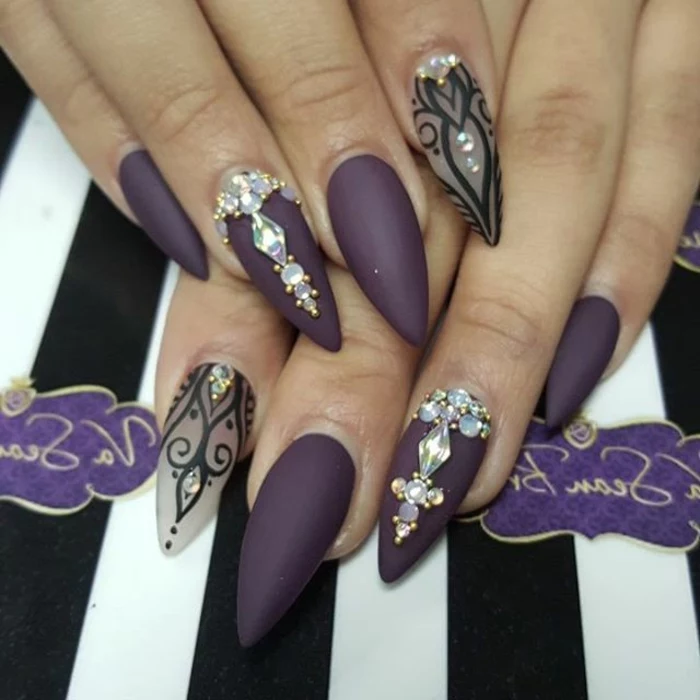
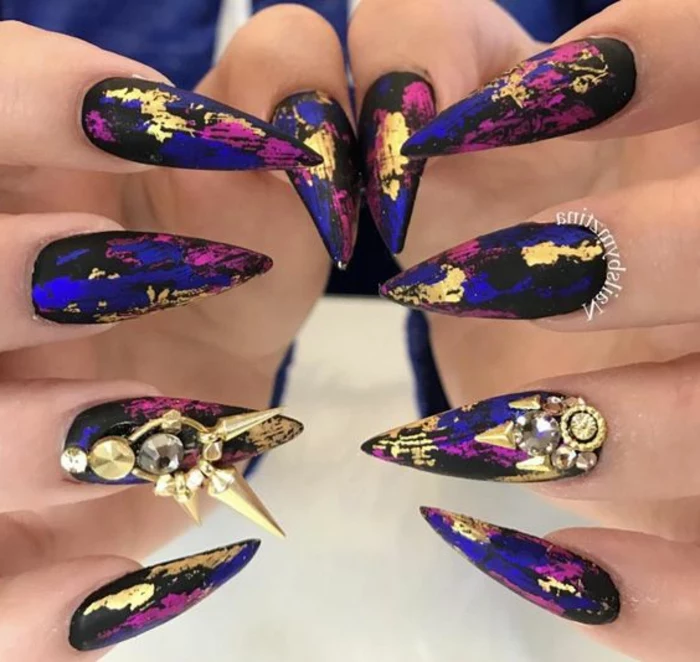
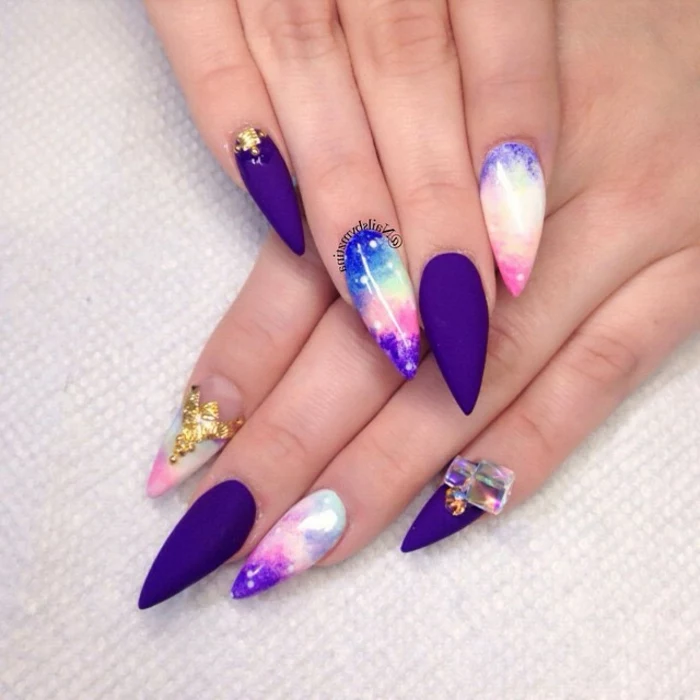
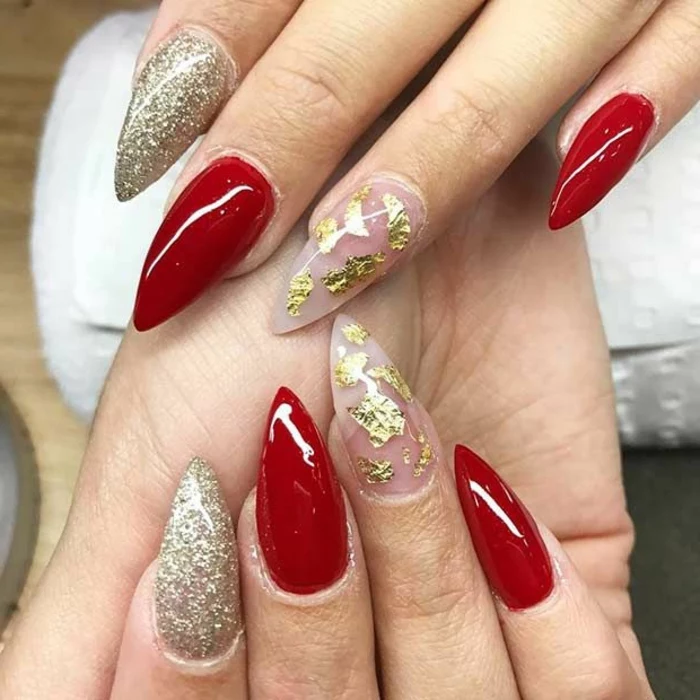
Don’t ignore a small crack! A tiny fissure at the side or tip might seem harmless, but on a long, pointy nail, it’s a structural weak point. The pressure from daily activities will concentrate on that spot, almost guaranteeing a full, painful break. See your technician for a repair as soon as you notice one.
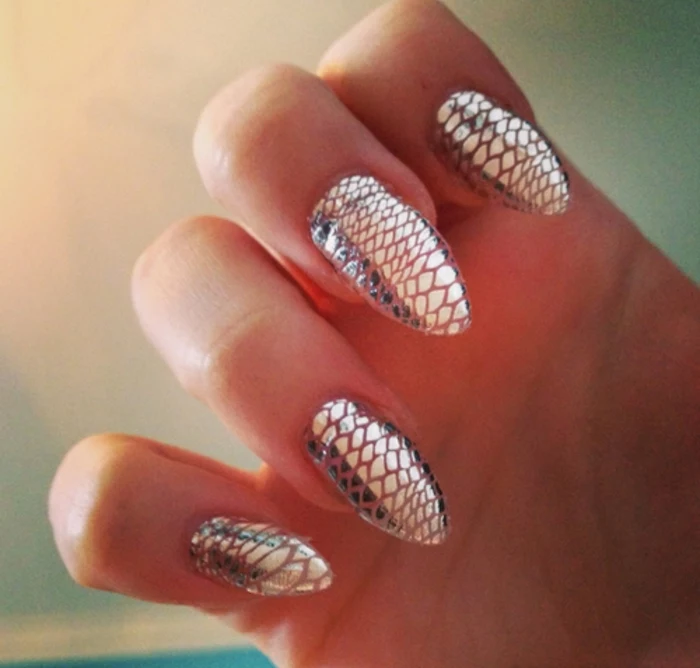
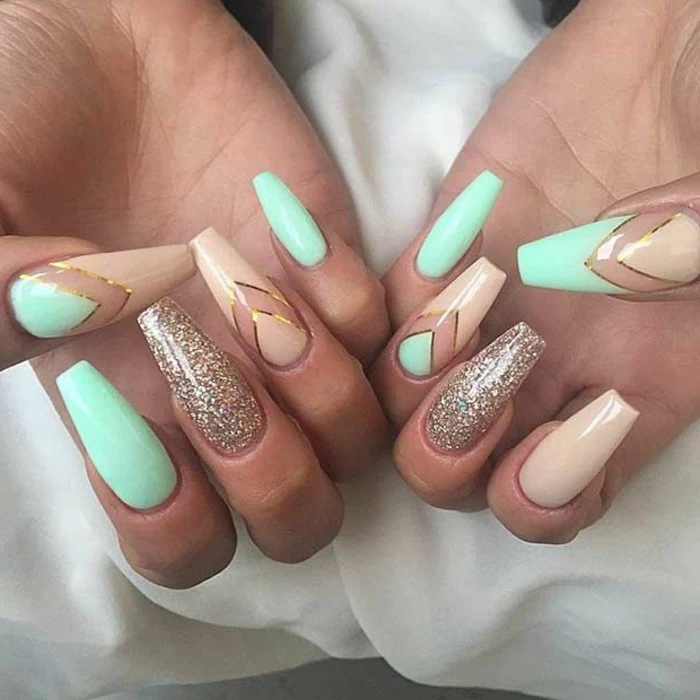
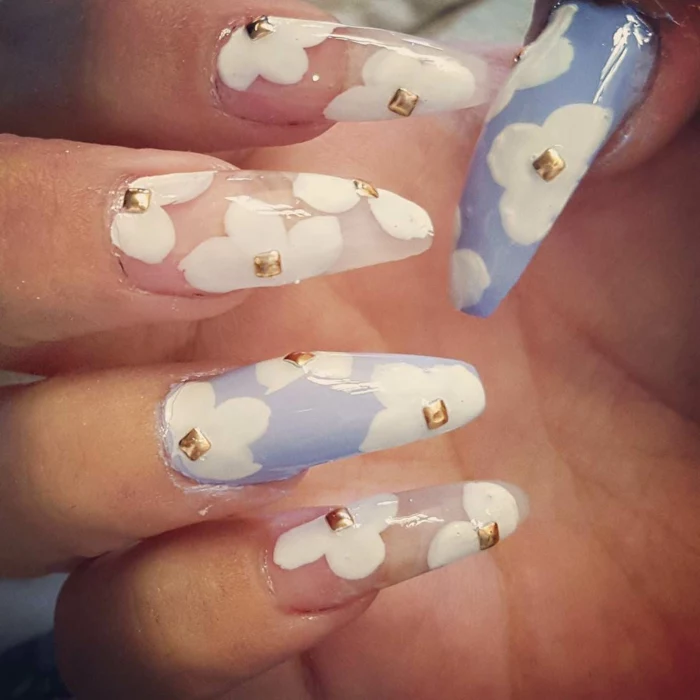
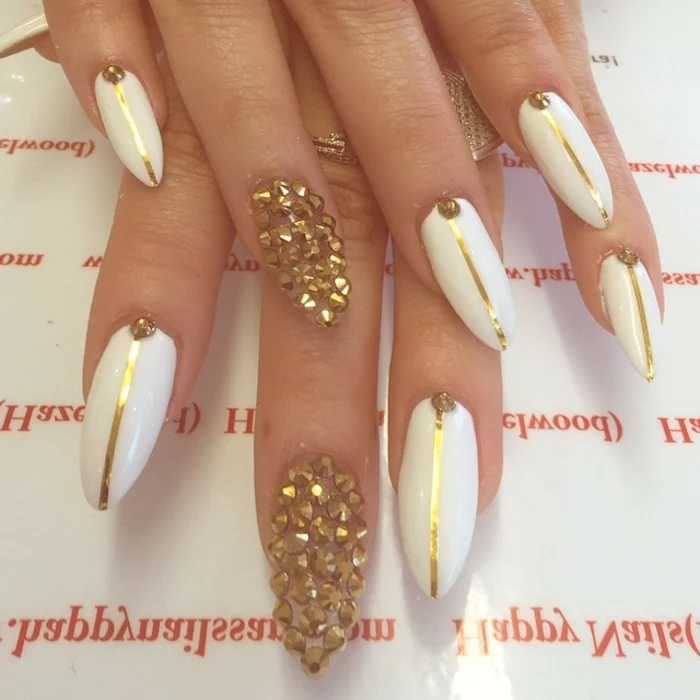
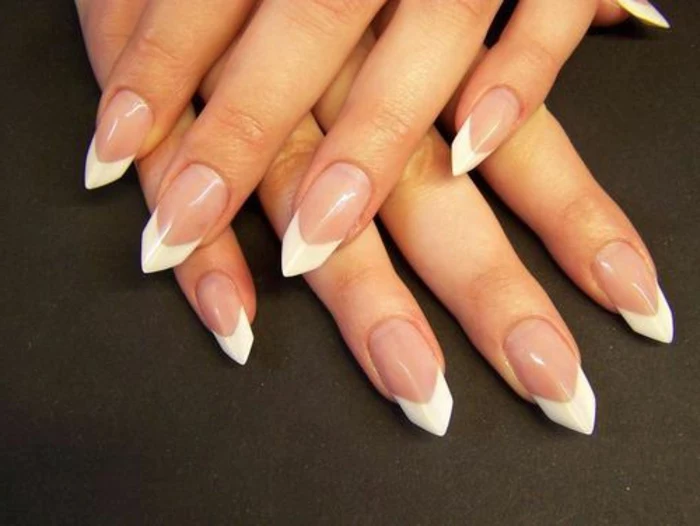
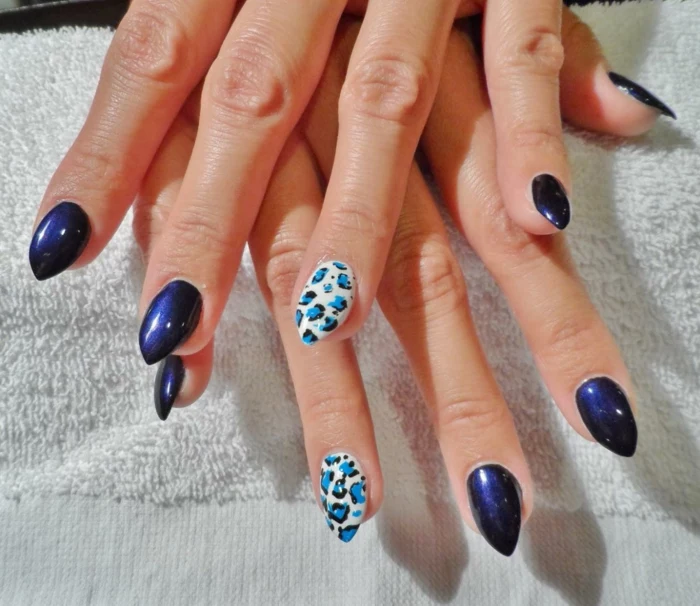
For those not ready for the commitment or cost of salon enhancements, high-quality press-on nails are a game-changer. Brands like Glamnetic or Kiss offer reusable stiletto and almond shapes in countless designs. They’re perfect for a special event or to simply test-drive the pointy look before you fully commit.
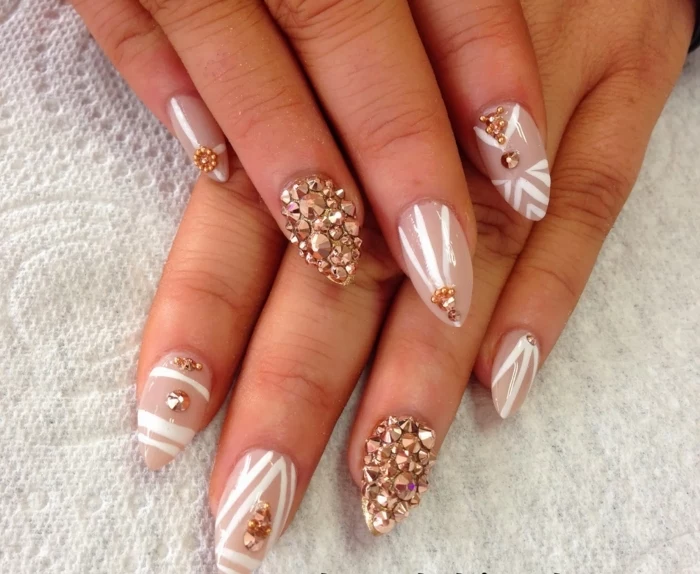
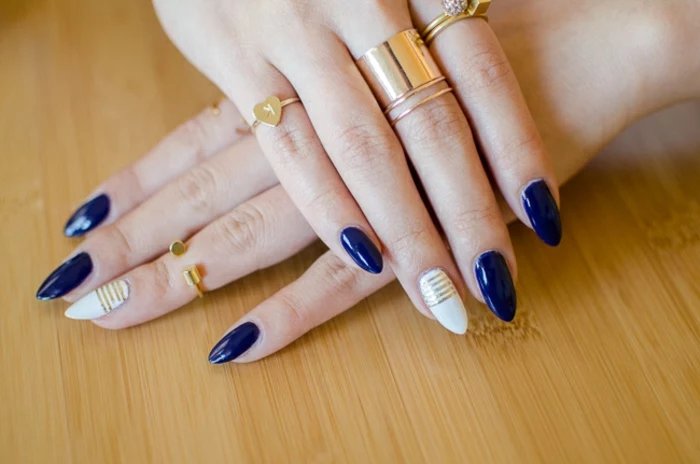
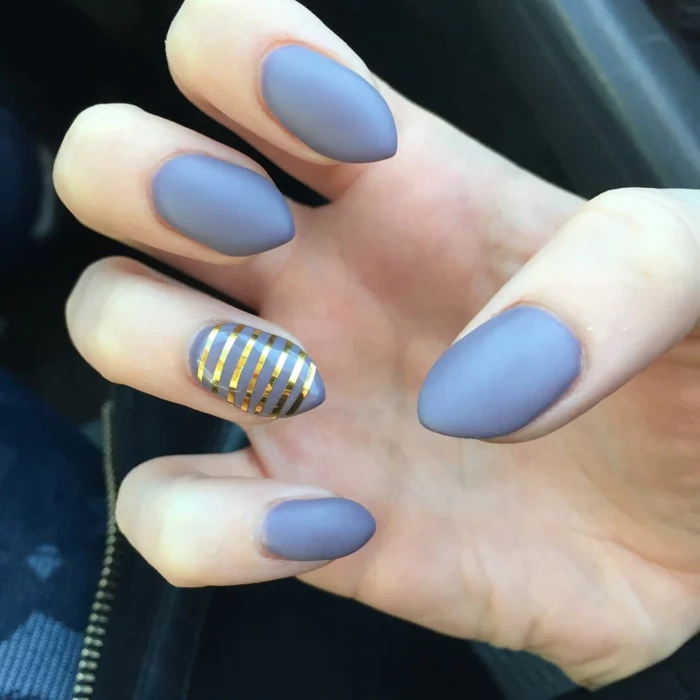
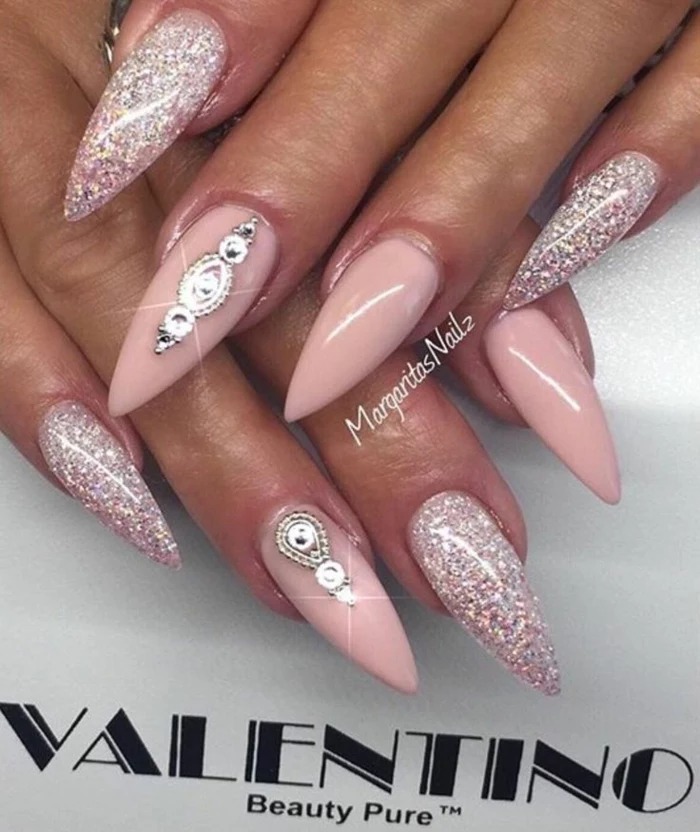
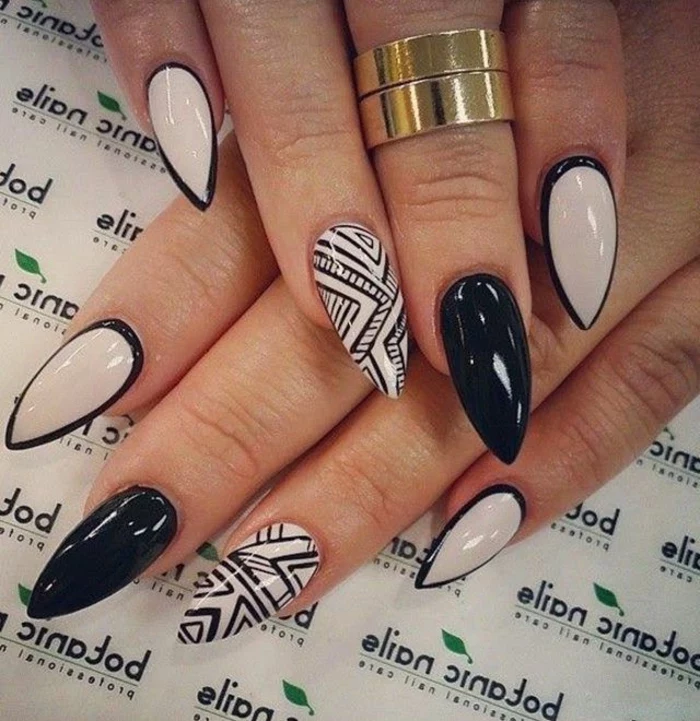
According to a 2021 study, the average composition of a healthy fingernail is 18% water. When dehydrated, they become more brittle.
This is why constant hydration is key, especially with enhancements. Cuticle oil, particularly one rich in jojoba oil (whose molecules are small enough to penetrate the nail plate), is your best friend. Apply it daily to keep the natural nail underneath flexible and healthy.
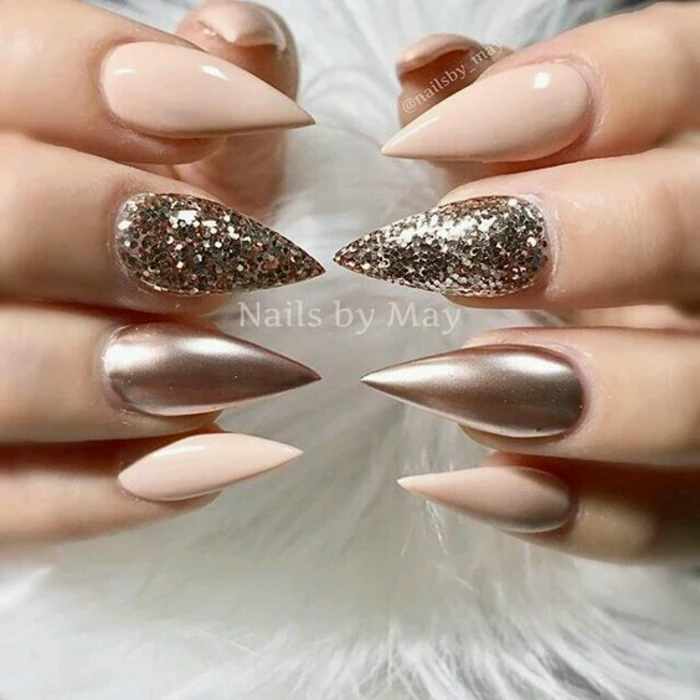
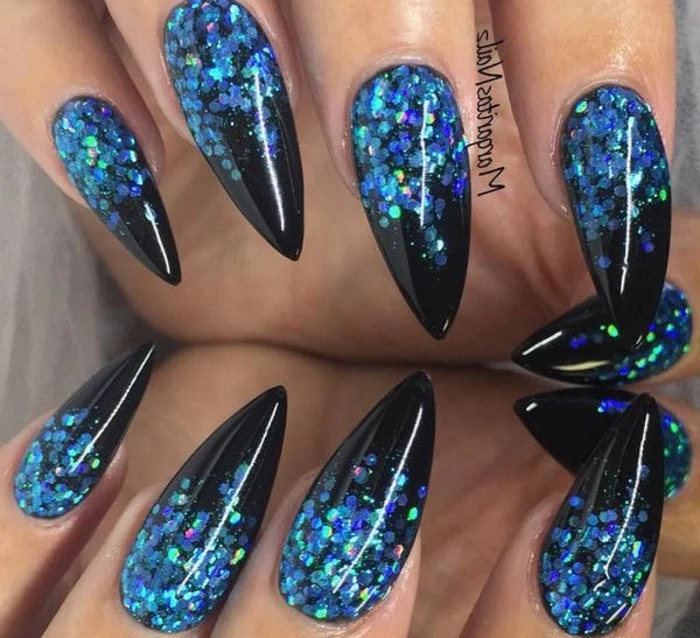
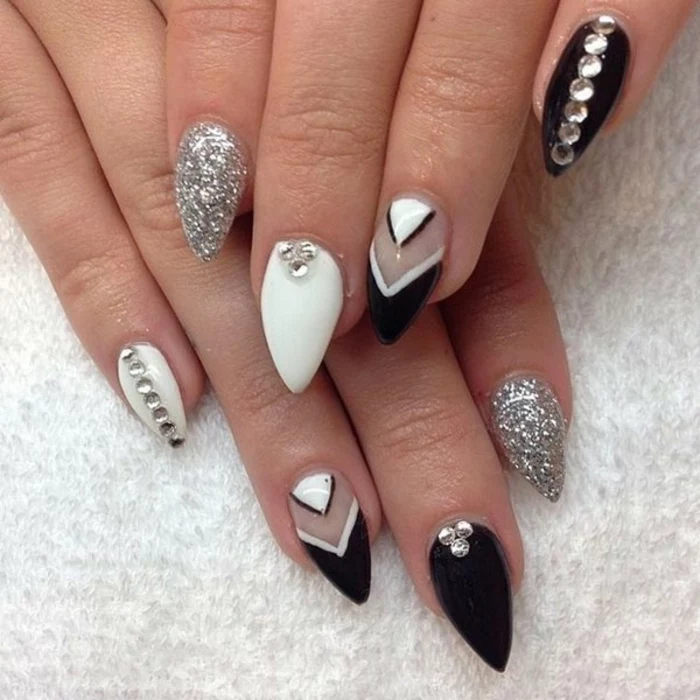
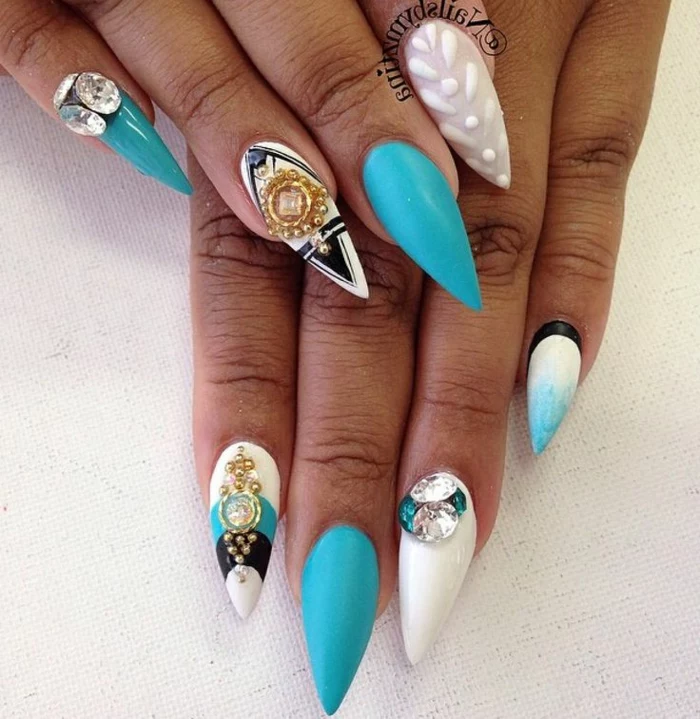
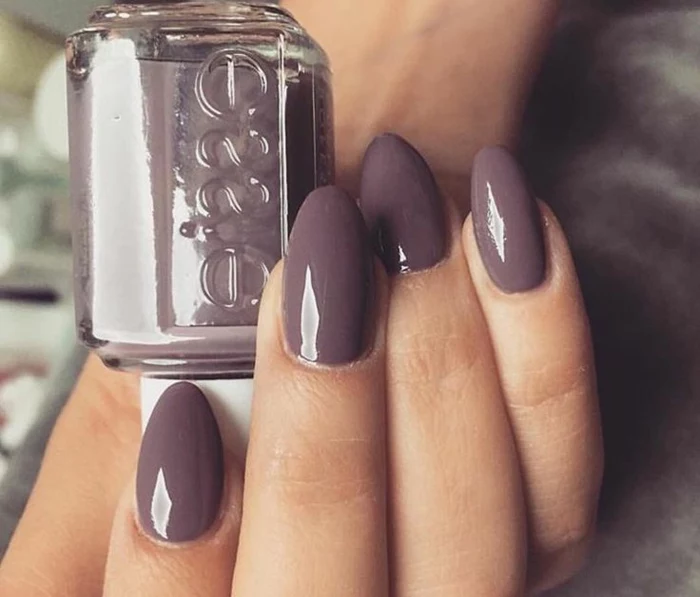
The choice between a stiletto and an almond shape often comes down to lifestyle. The almond has a slightly wider, more rounded tip, which provides better structural support and is less prone to snagging or snapping. The stiletto is the definition of drama, but its razor-sharp point is inherently more fragile and requires extra care.
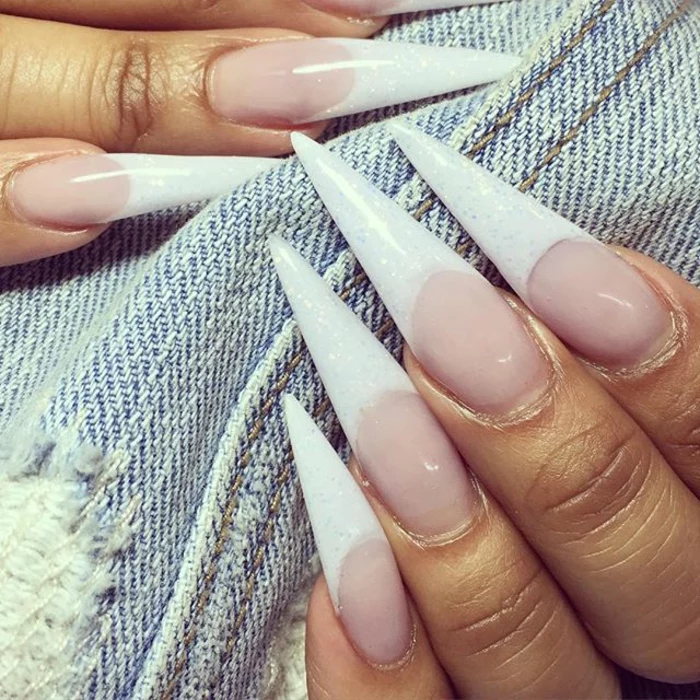
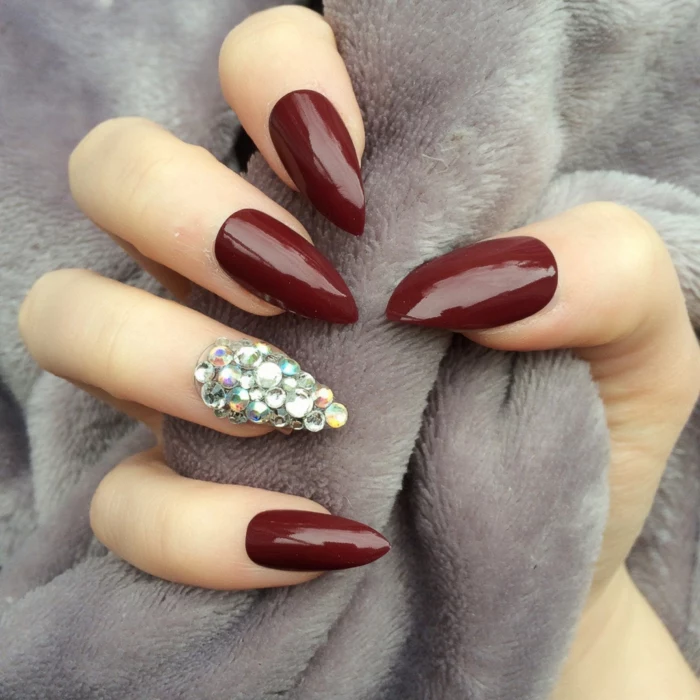
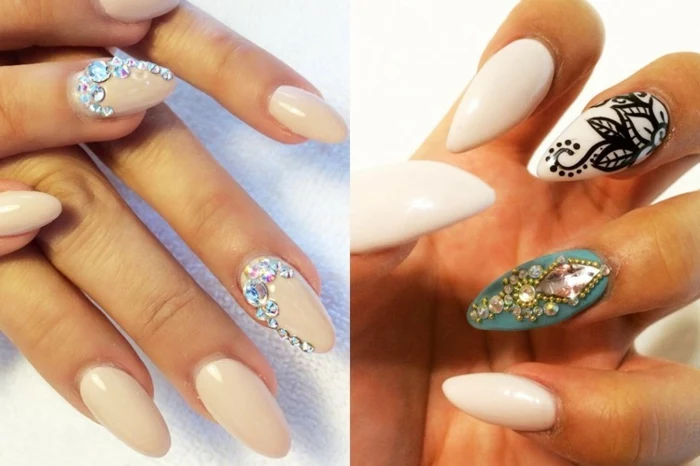
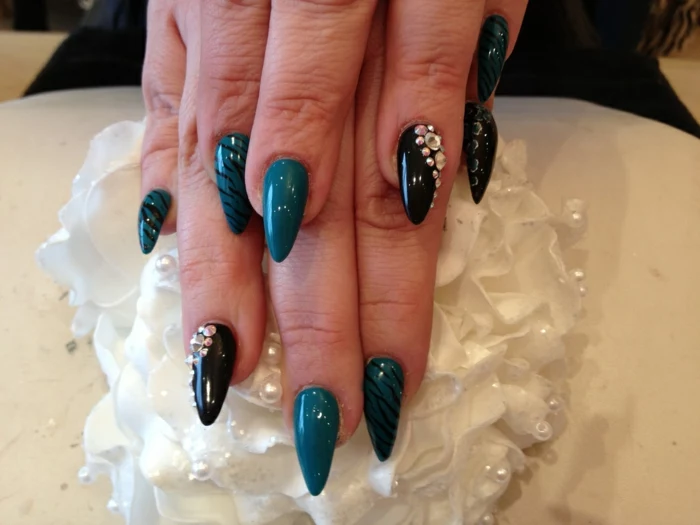
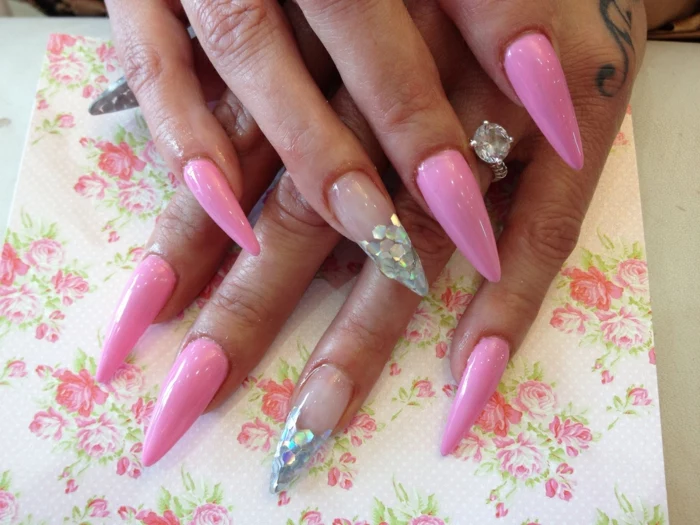
What exactly is an Apres Gel-X nail?
It’s a full-coverage soft gel tip that is applied over the entire nail plate and cured under an LED light. Unlike traditional tips that are just on the edge, these provide structure from cuticle to tip. For pointy shapes, this is a fantastic option because the tips are perfectly pre-shaped and have their own apex built-in, ensuring a strong, beautiful result every time.
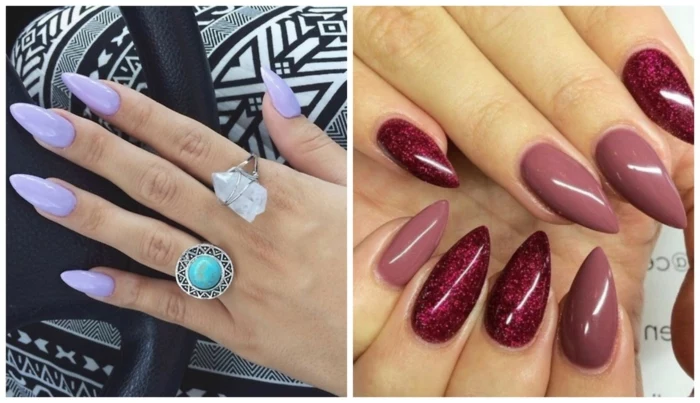
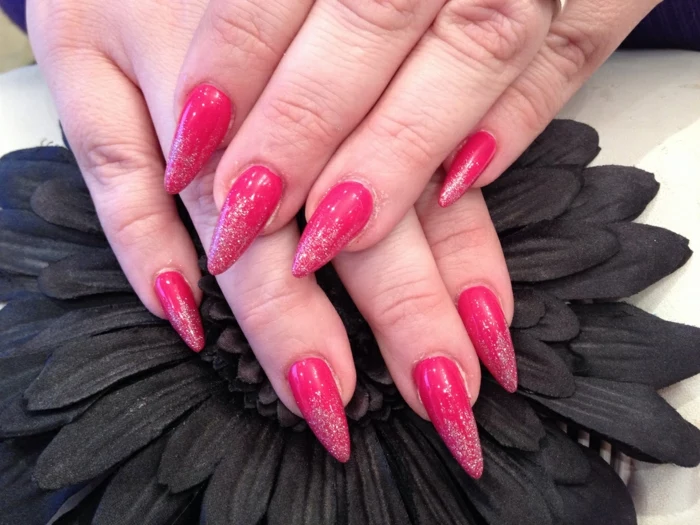
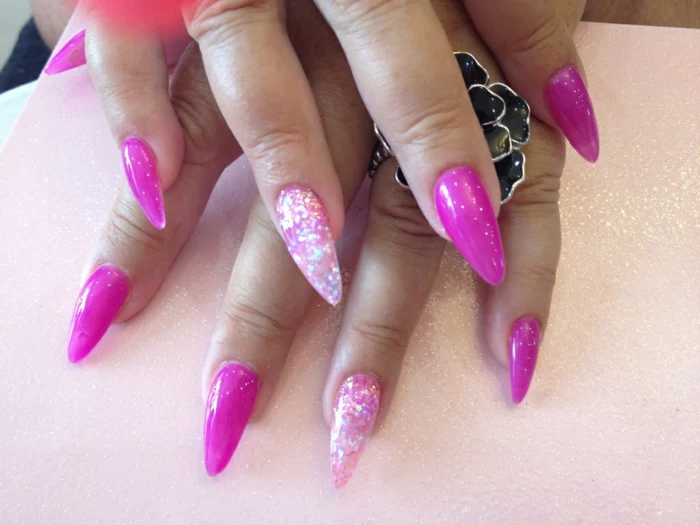
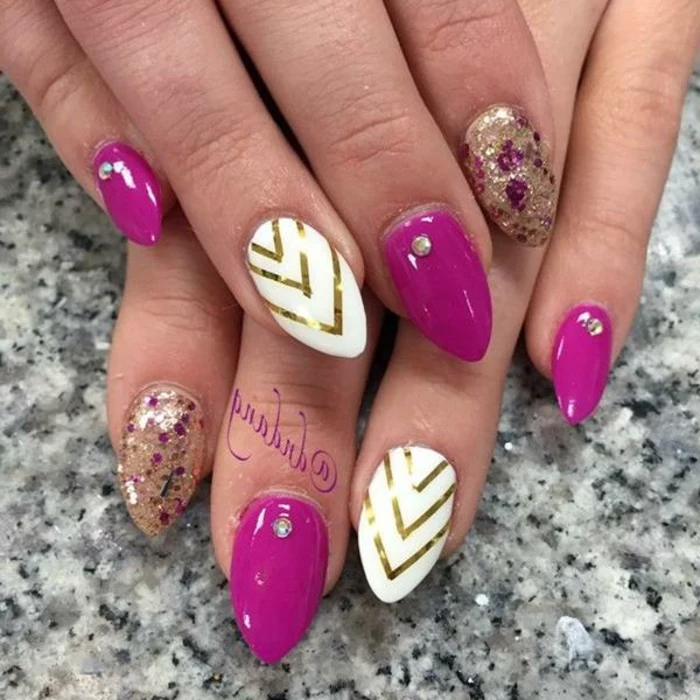
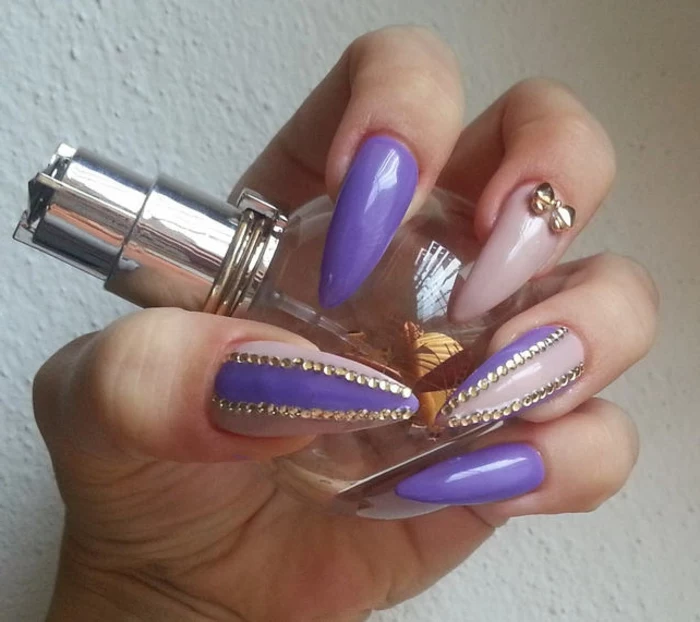
Feeling the lift? It’s time for a fill. Here’s what to watch for:
- A visible gap or regrowth near your cuticle.
- Any lifting or separation of the product from your natural nail, especially along the side walls.
- Your nail’s balance feels ‘off’—the weight is no longer centered over the stress area.
Waiting too long can lead to moisture getting trapped, which is a recipe for trouble.
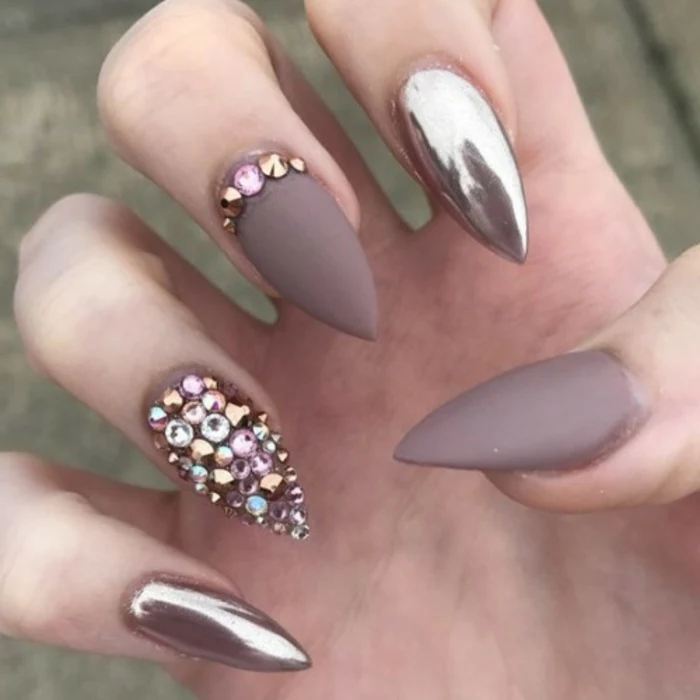

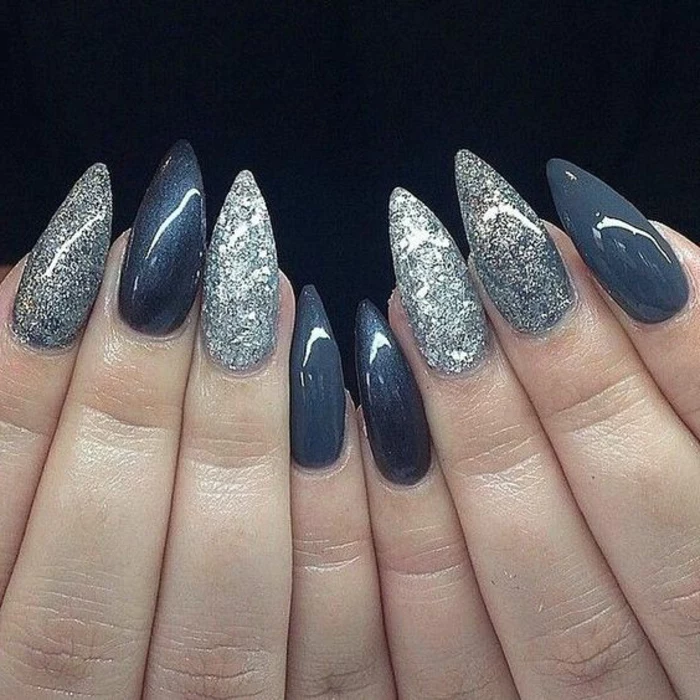
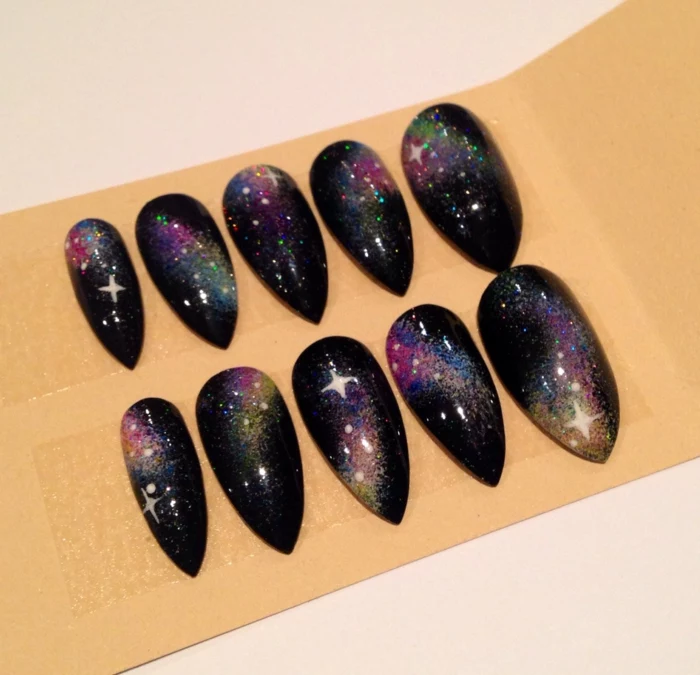
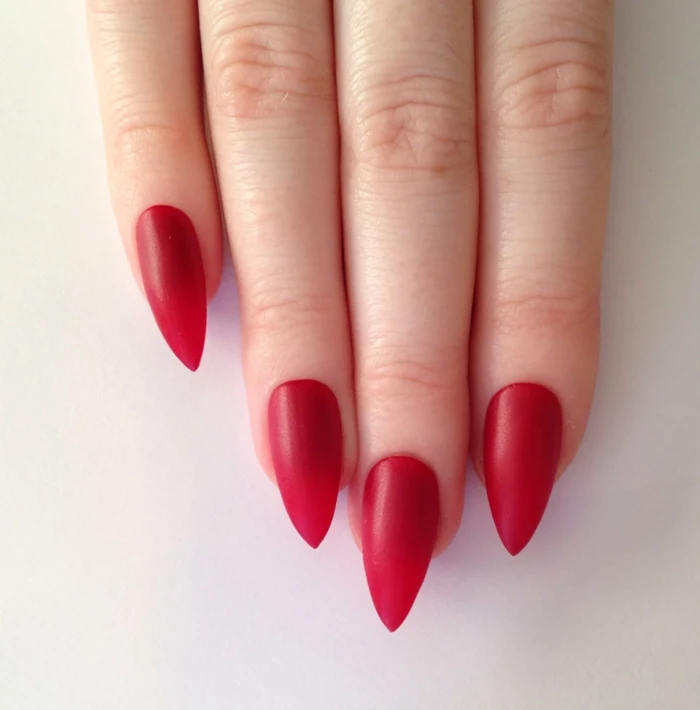
Pro Tip: When you get a new set of long nails, consciously use your non-dominant hand for ‘risky’ activities like rummaging in a purse or opening drawers for the first few days. This helps train you to be more mindful and protects the manicure on the hand you use most, reducing the chance of an accidental break.
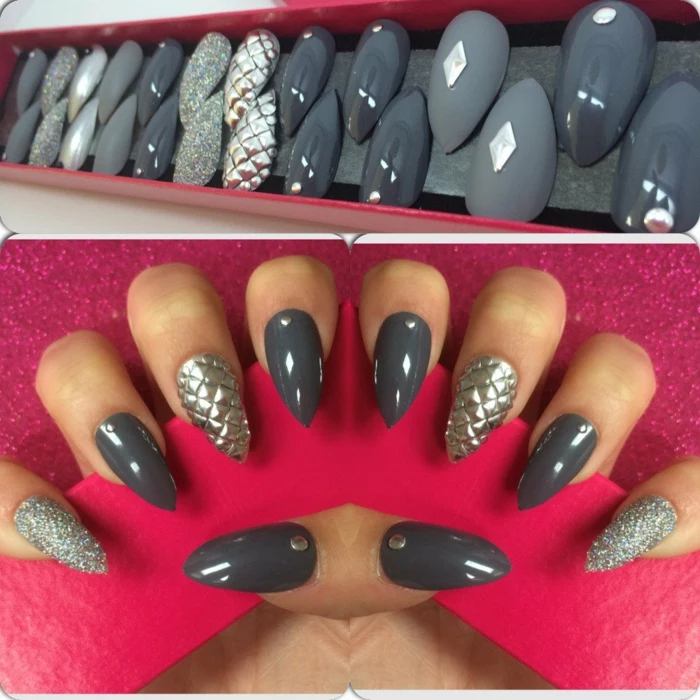
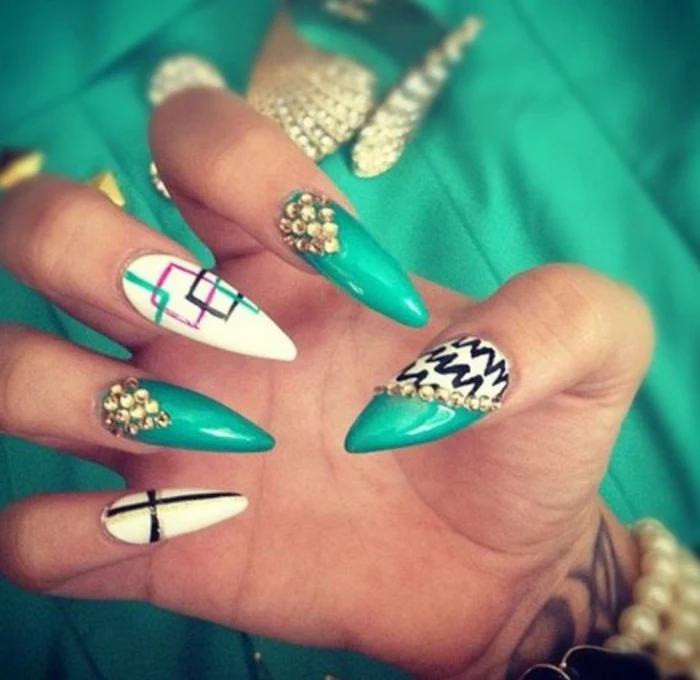
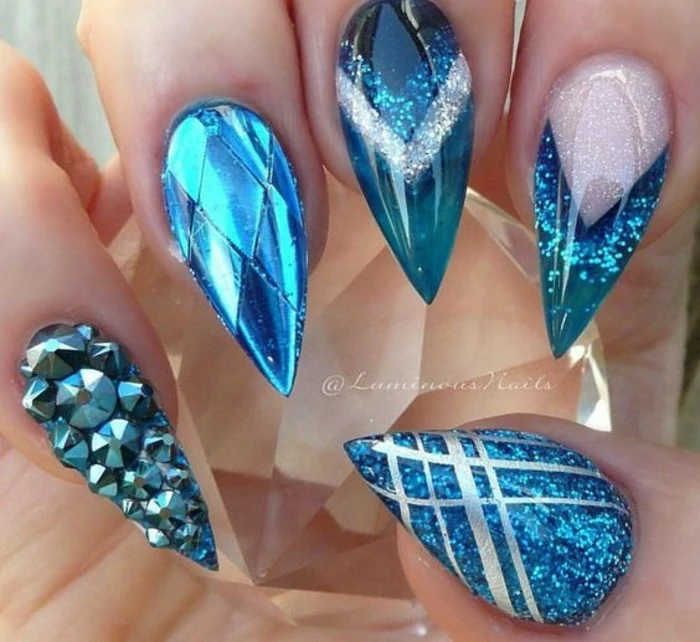
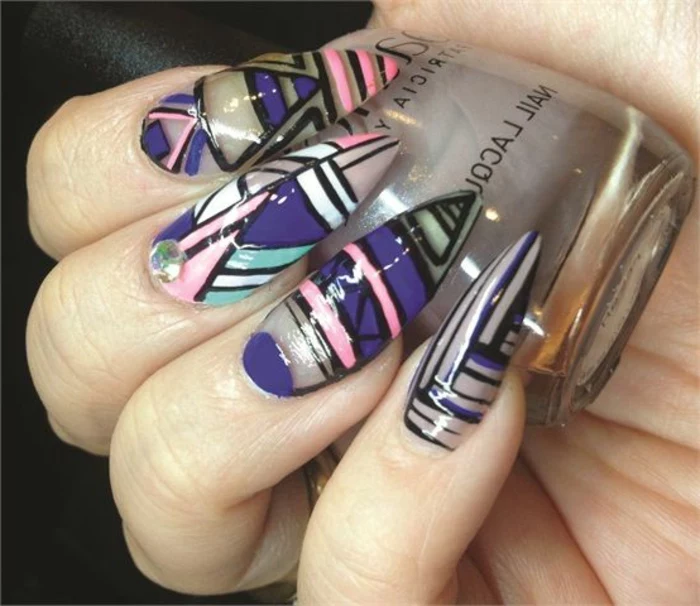
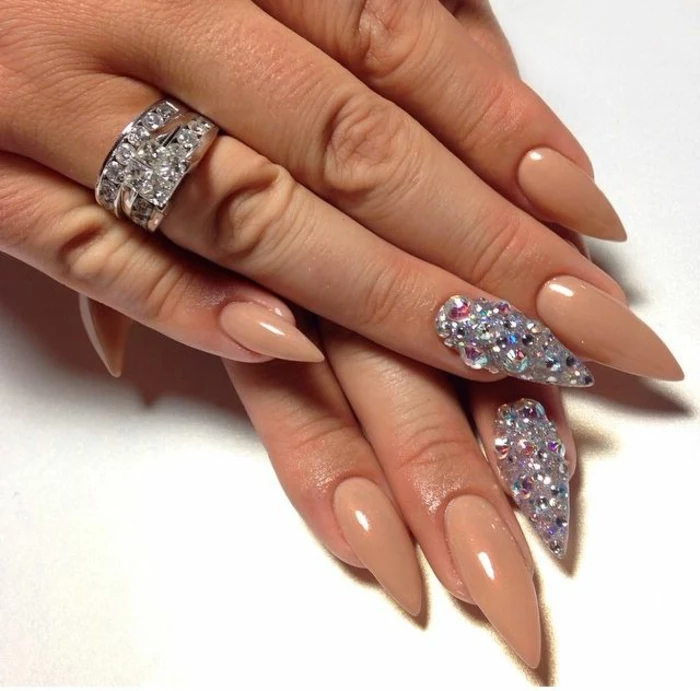
Cardi B, a style icon known for her extravagant nails, often showcases incredibly long and sharp stiletto designs, frequently crafted by her go-to artist, Jenny Bui. Her nails aren’t just an accessory; they’re a core part of her brand.
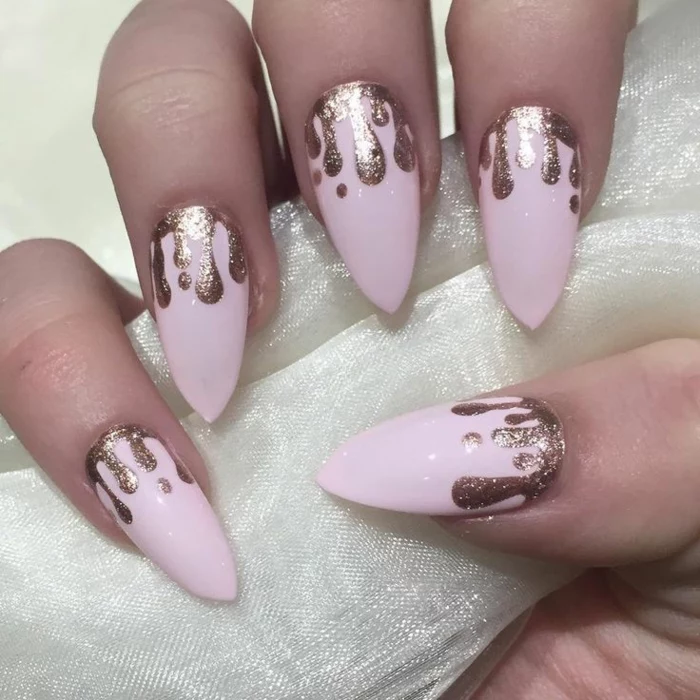
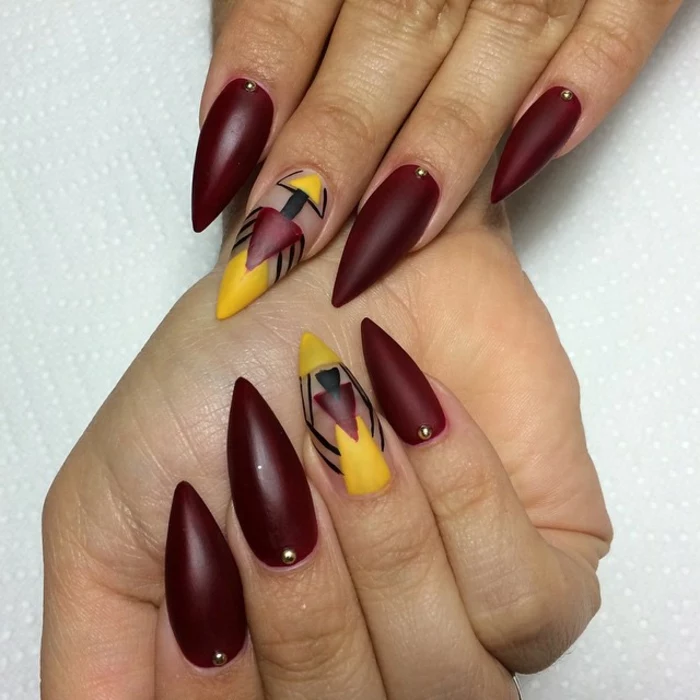
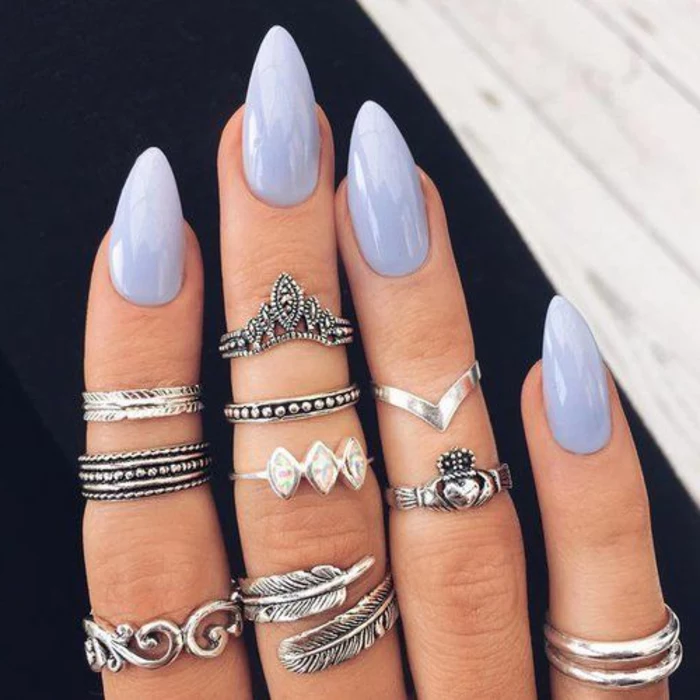
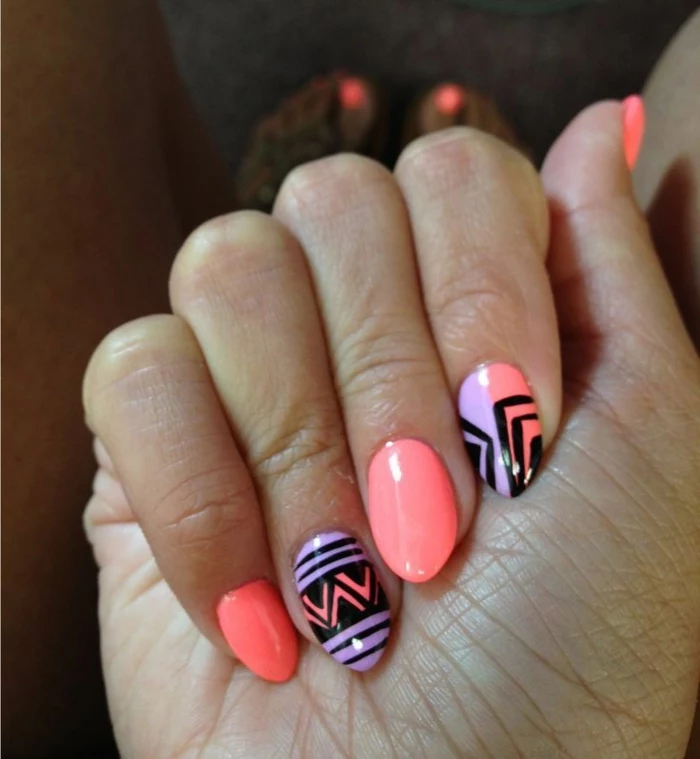
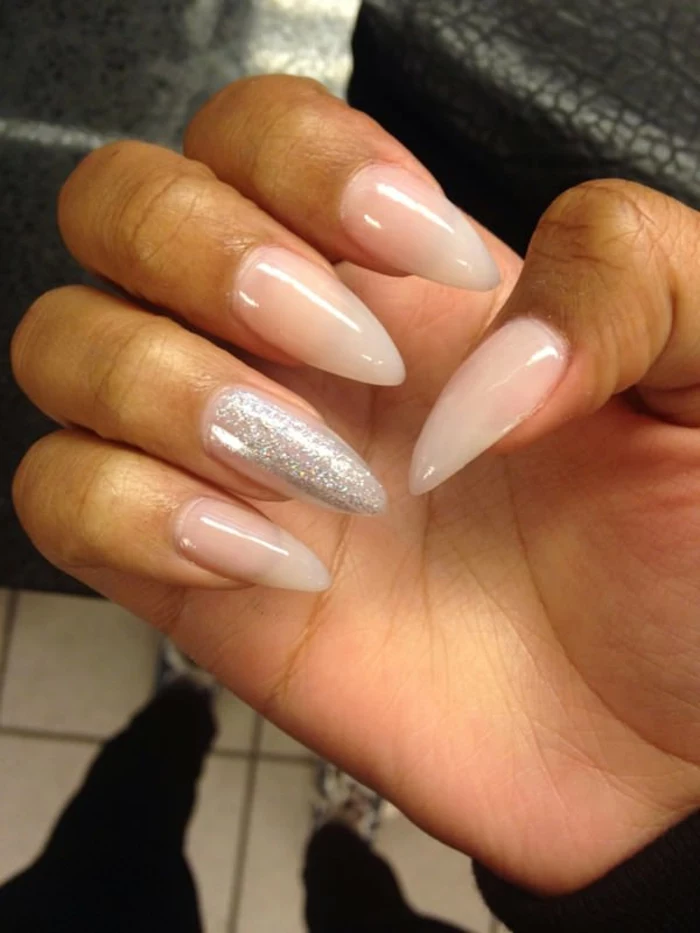
Color can dramatically alter the perception of your nail shape. Dark, bold colors like a deep bordeaux or classic black will accentuate the sharp lines of a stiletto, making it appear even more dramatic. Conversely, soft neutrals, milky whites, and pastel shades can soften the look, making an almond shape feel elegant and chic rather than aggressive.
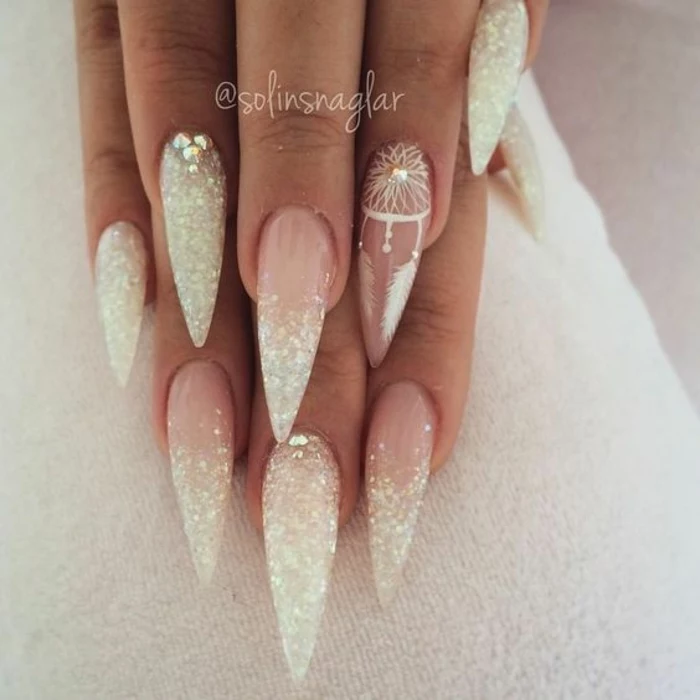
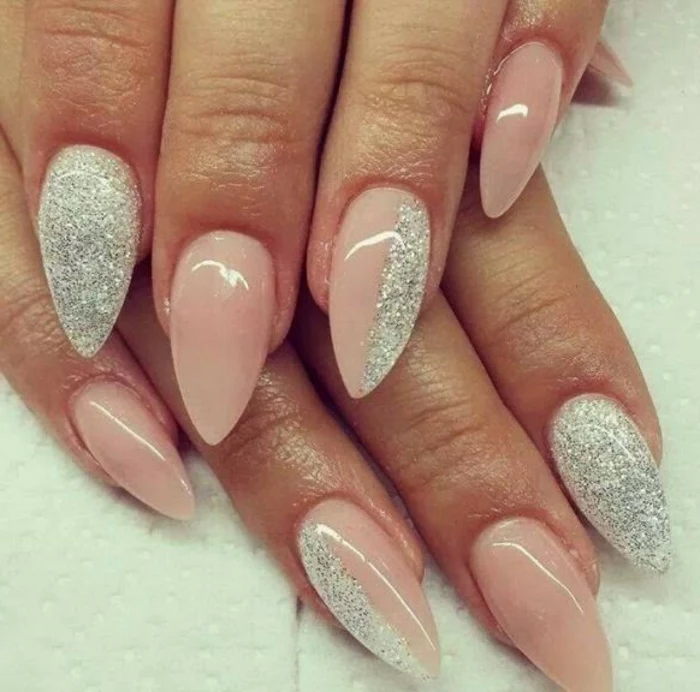
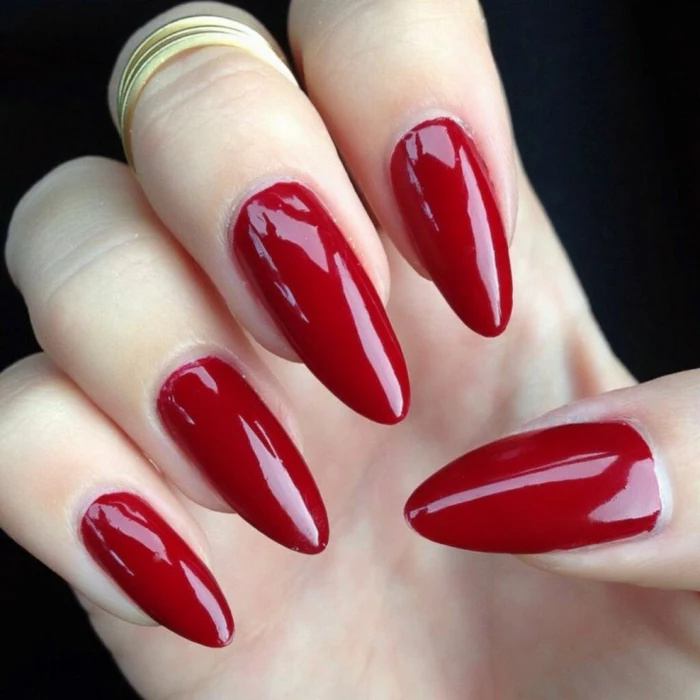
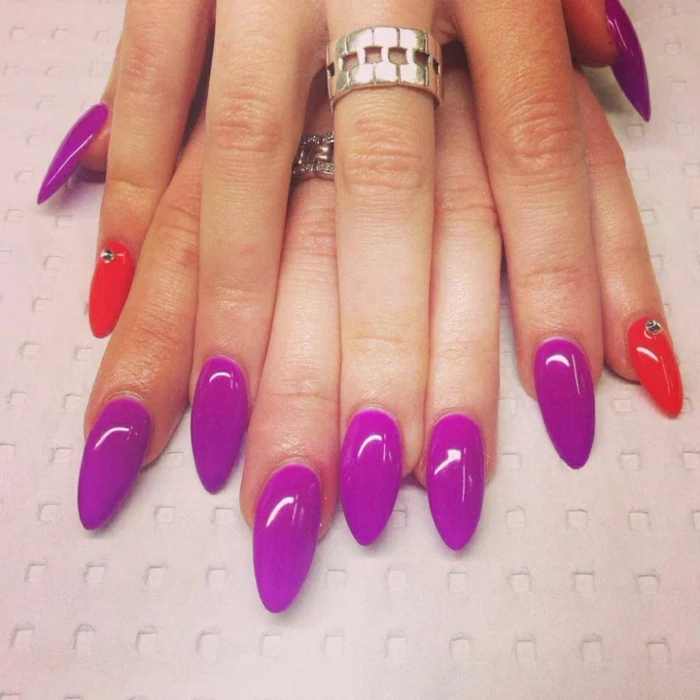
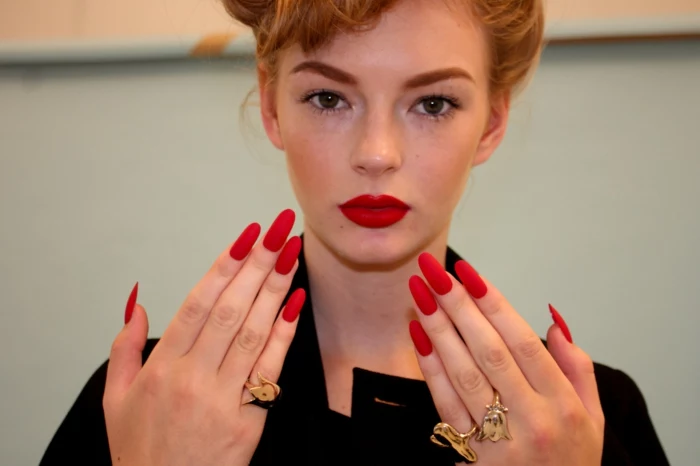
The biggest DIY mistake is over-filing the sides of the nail in an attempt to make it narrower. These side walls are the foundation of the nail’s strength. Filing them away removes the support for the apex and the tip, making the nail incredibly weak and prone to snapping right across the middle.
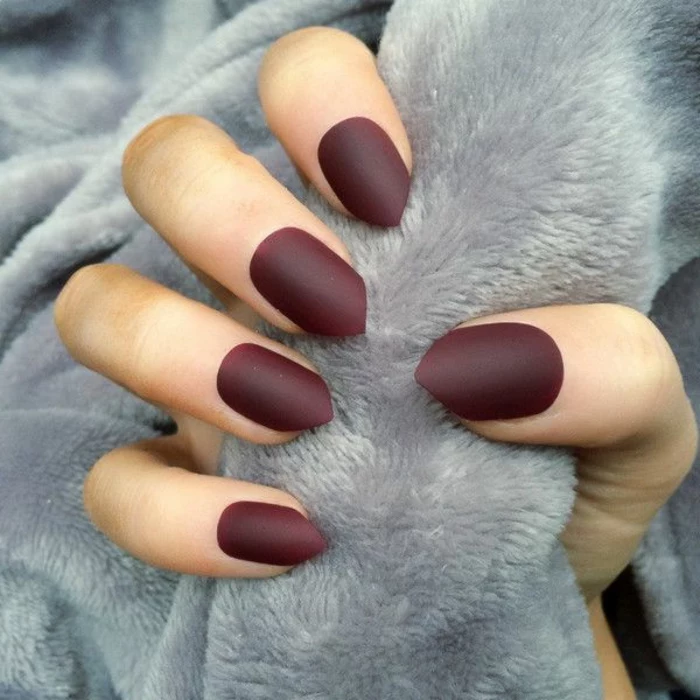

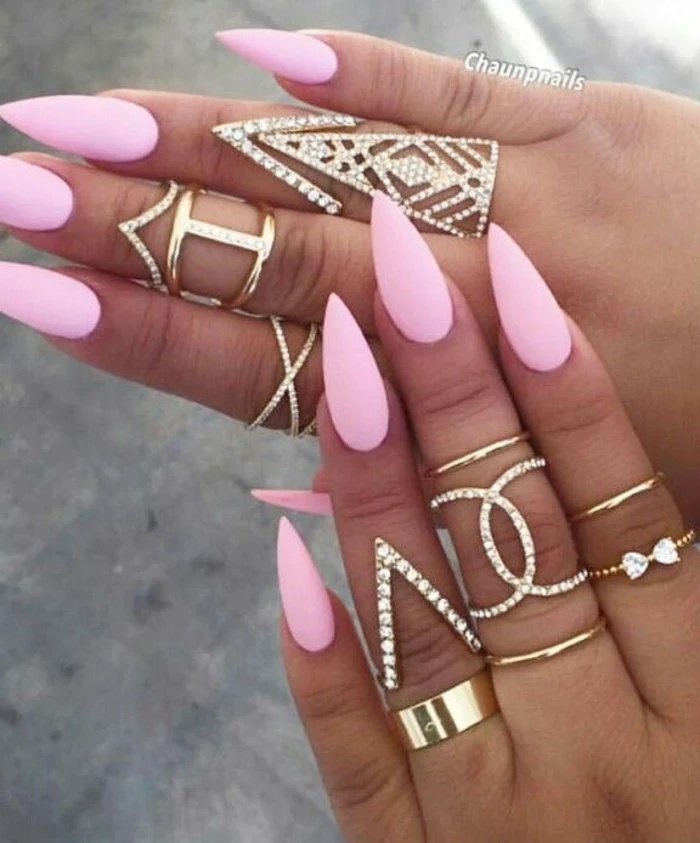
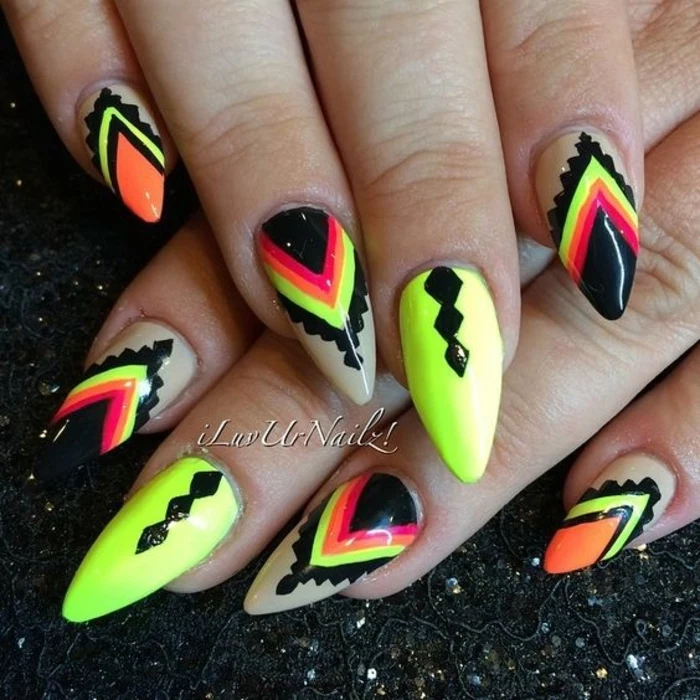
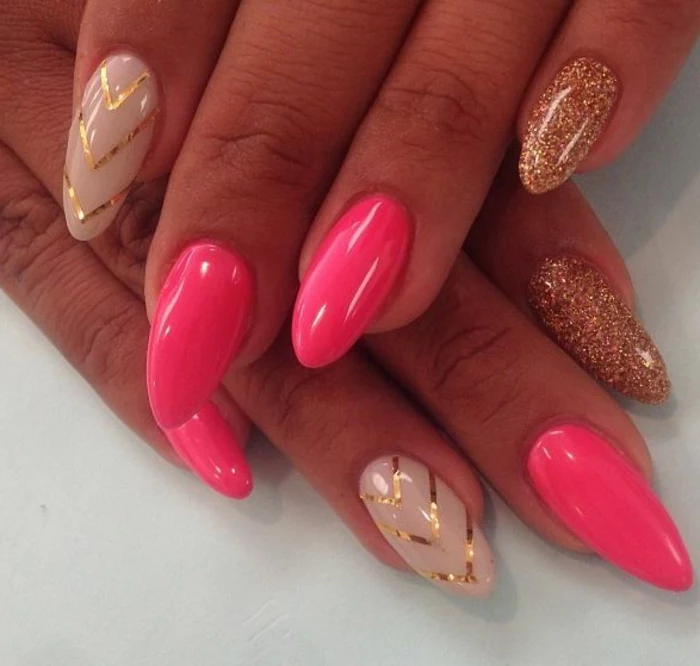
Your aftercare kit is simple but non-negotiable for keeping your investment pristine.
- Cuticle Oil: A high-quality oil, like CND SolarOil, keeps the nail and surrounding skin hydrated.
- Gentle Soap: Use a moisturizing, sulfate-free hand wash to avoid drying out your skin and nails.
- A Soft Nail Brush: Use it to gently clean underneath the tips, where dirt and grime can accumulate.
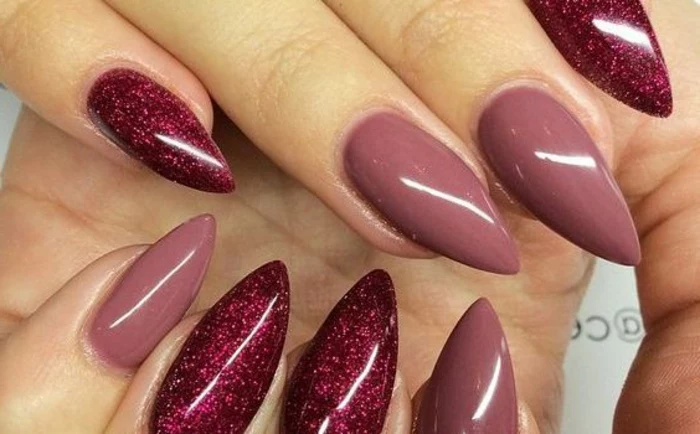
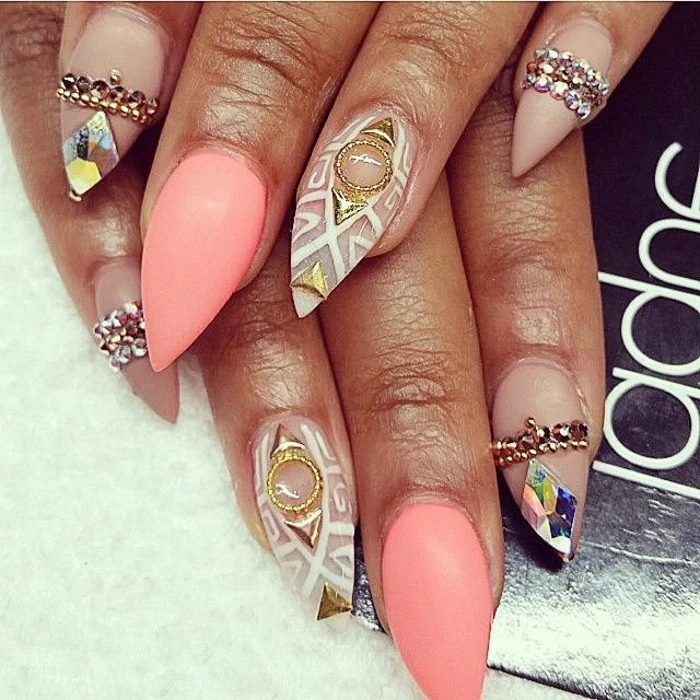
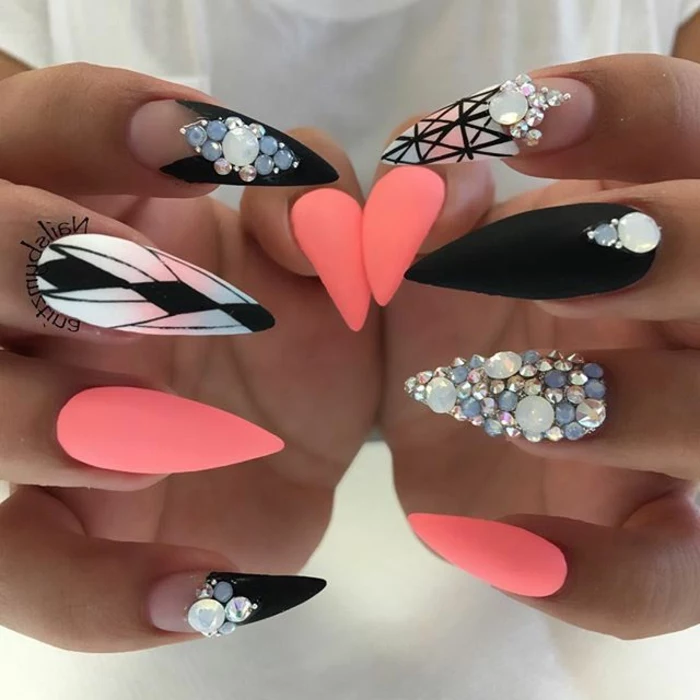
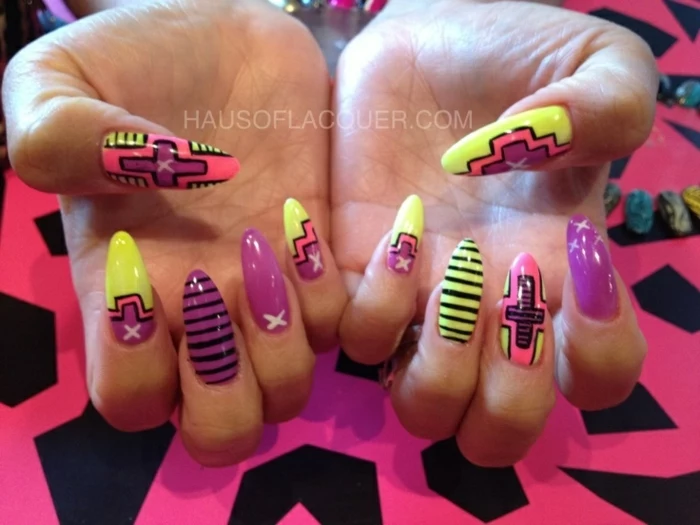
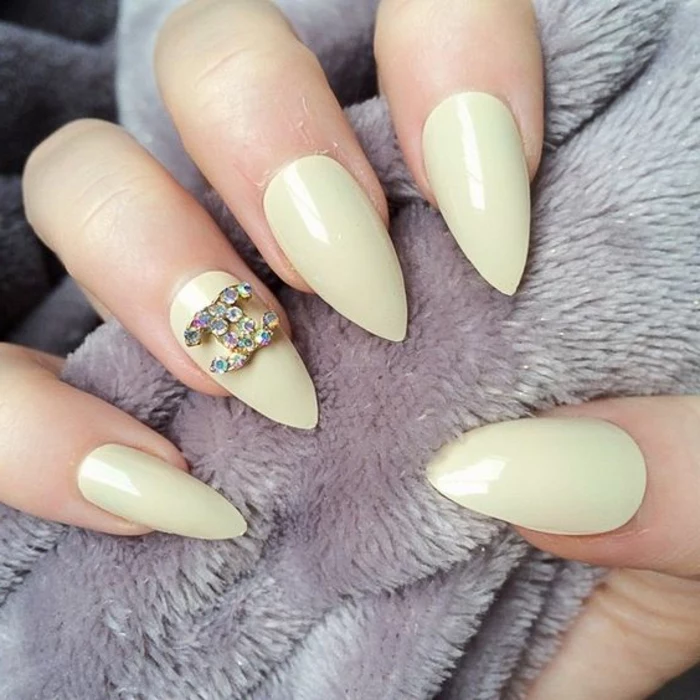
At-Home Soaking: Involves using 100% acetone, which can be extremely drying to the nail plate and surrounding skin if not done carefully. It’s often slow and messy. Professional E-File Removal: A trained technician uses an electric file to gently buff away the product, leaving a thin layer to protect the natural nail. This is faster, more precise, and generally healthier for your nails when done correctly.
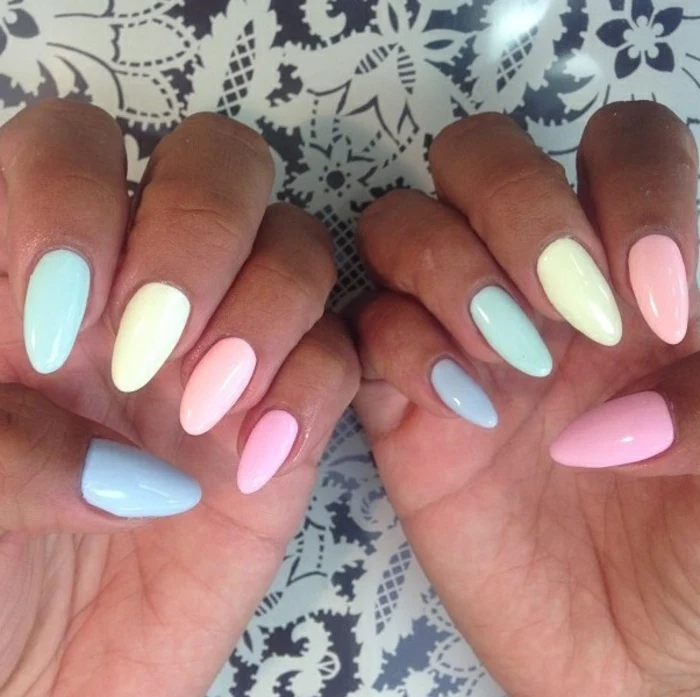
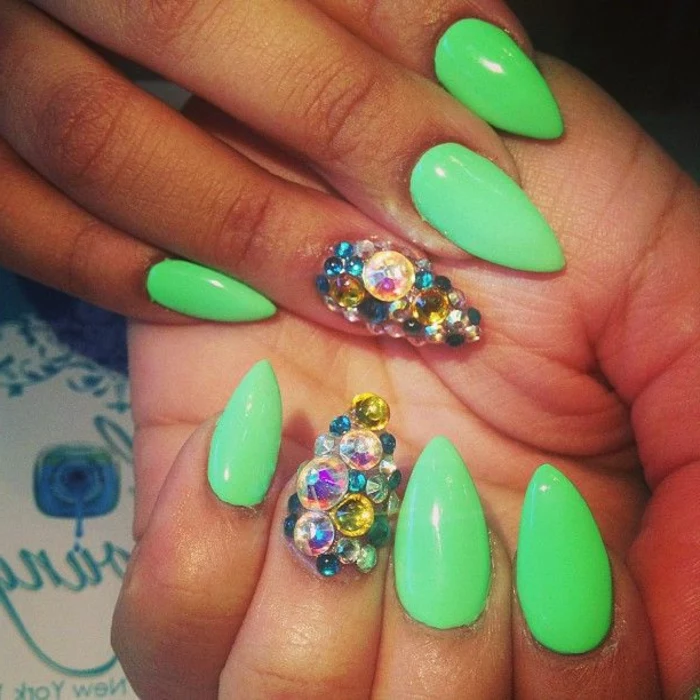
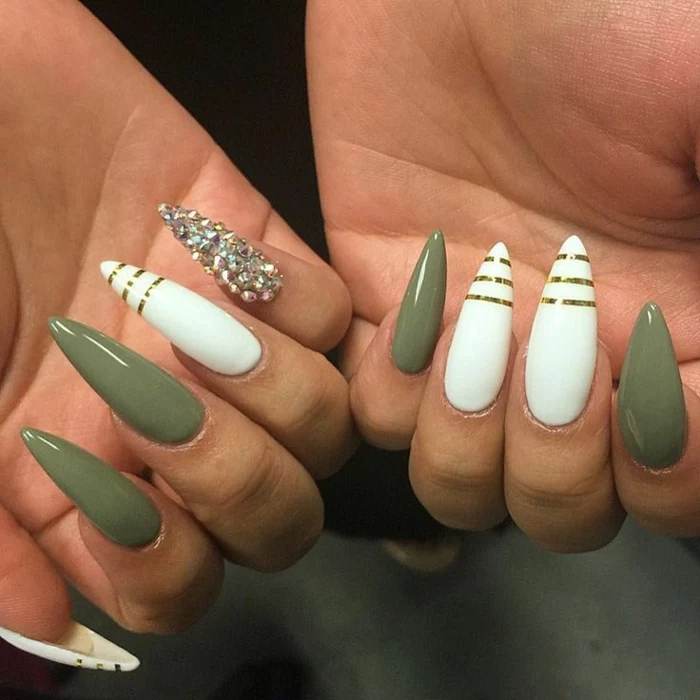
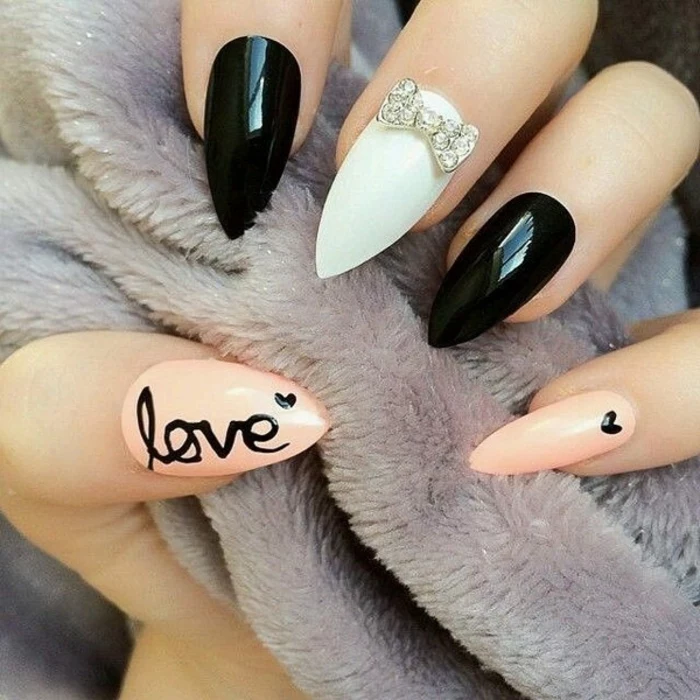
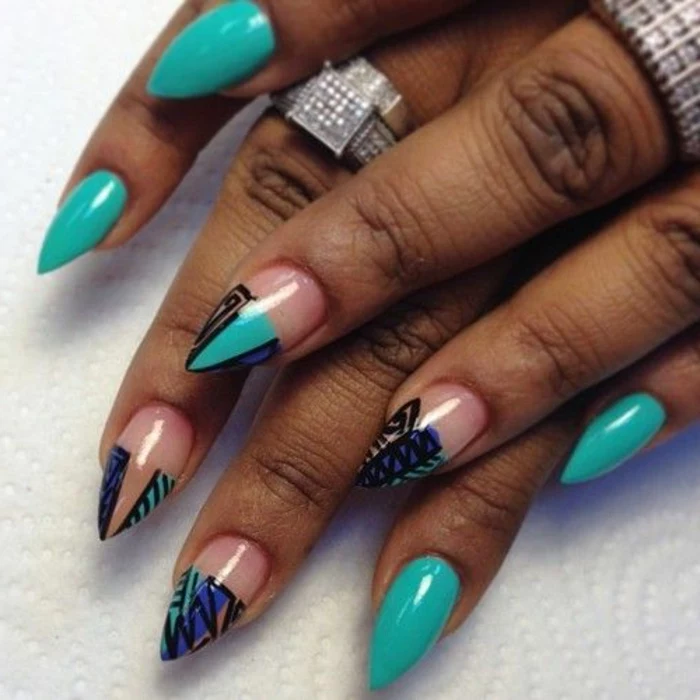
- Keeps your natural nails healthier.
- Is more cost-effective over time.
- Maintains the structural integrity of the enhancement.
The secret? Regular fills every 2-3 weeks. A fill rebalances the apex and covers regrowth, preventing the nail from becoming top-heavy and prone to breaking. It’s maintenance, not just a touch-up.
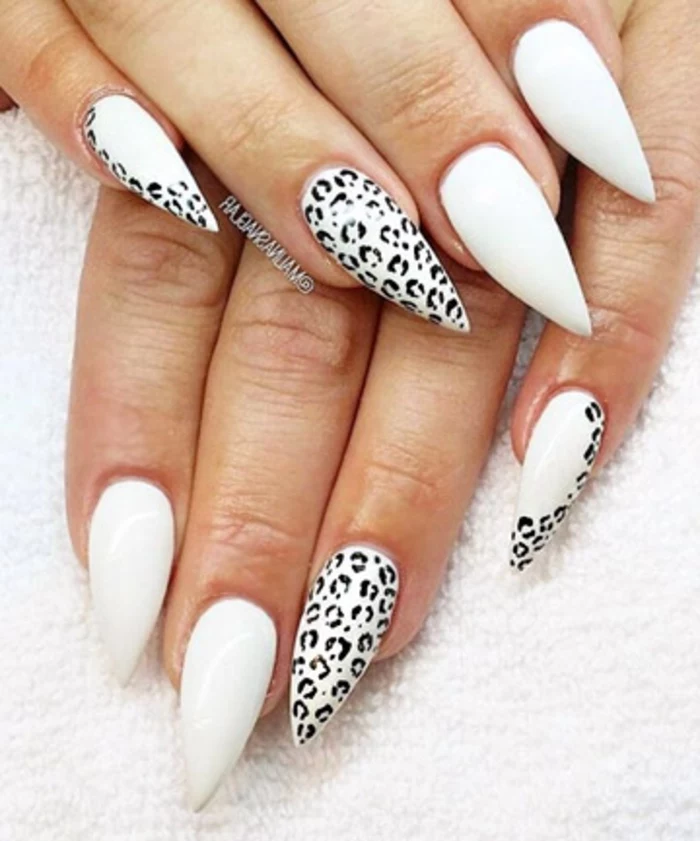
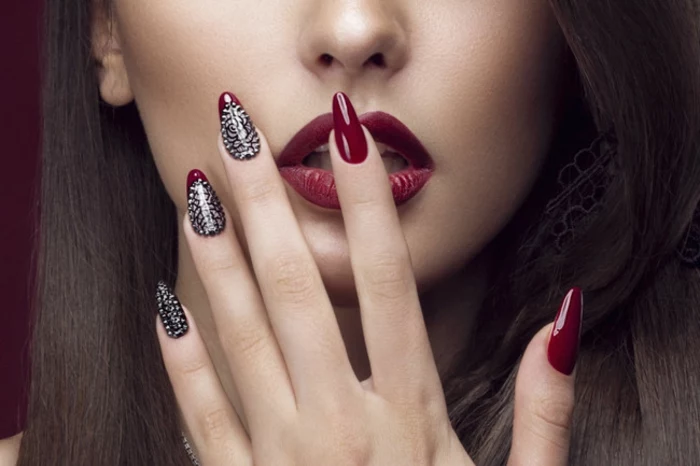
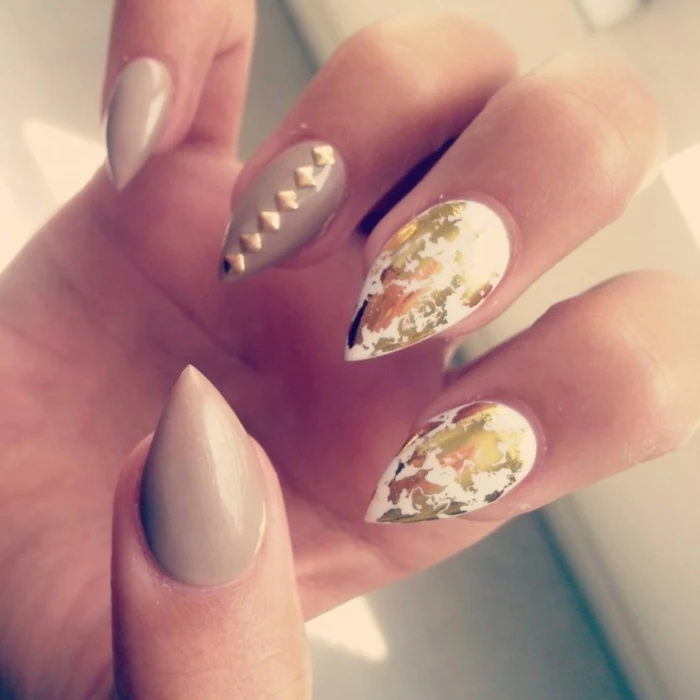

Want that ‘wet look’ shine seen on celebrities like Rihanna and Beyoncé? Ask your technician for a no-wipe gel top coat. Brands like Kupa or Kiara Sky offer formulas that cure to a rock-hard, super glossy finish that resists scratches and dulling, keeping your pointy nails looking fresh from the salon for weeks.

